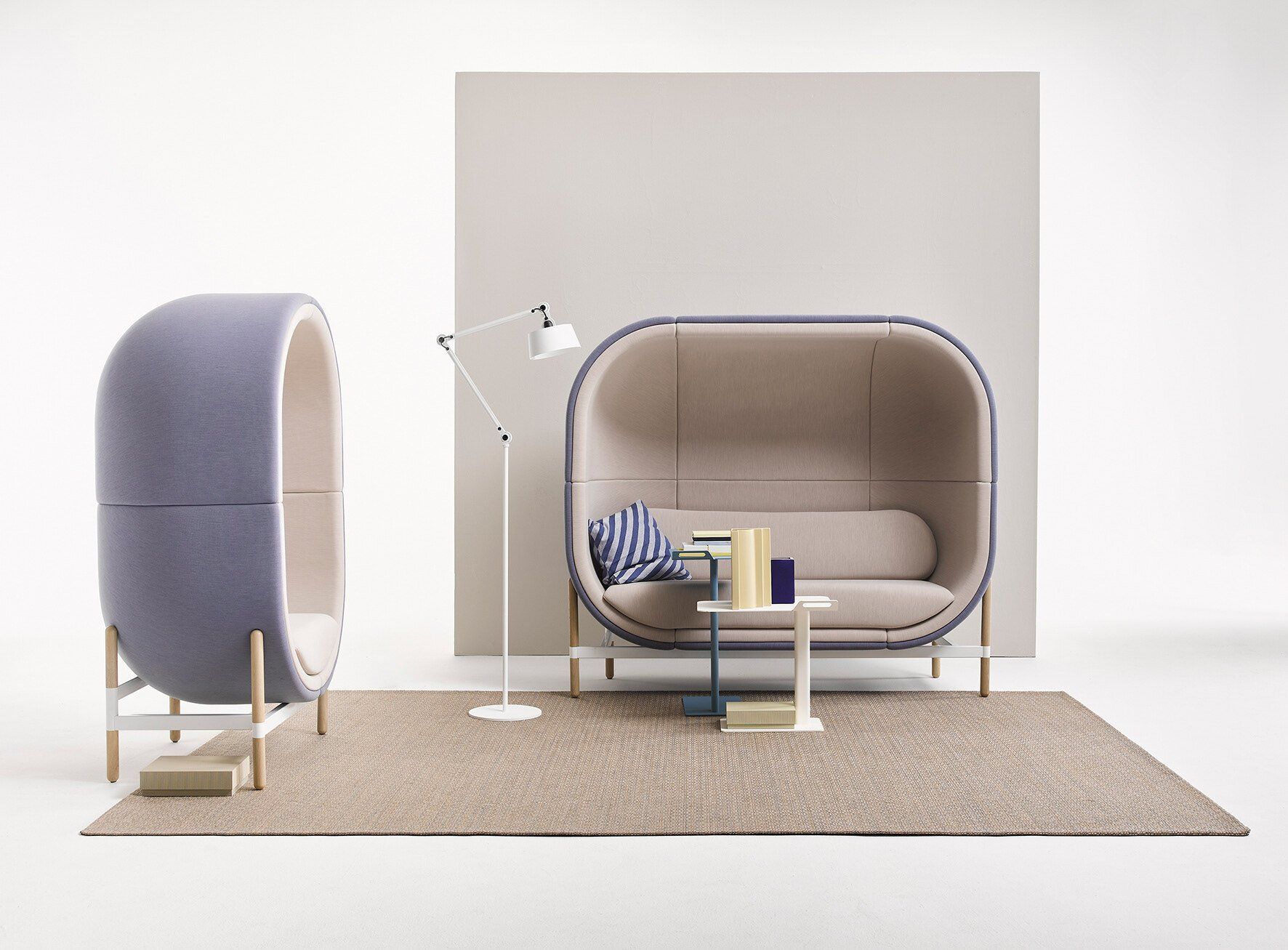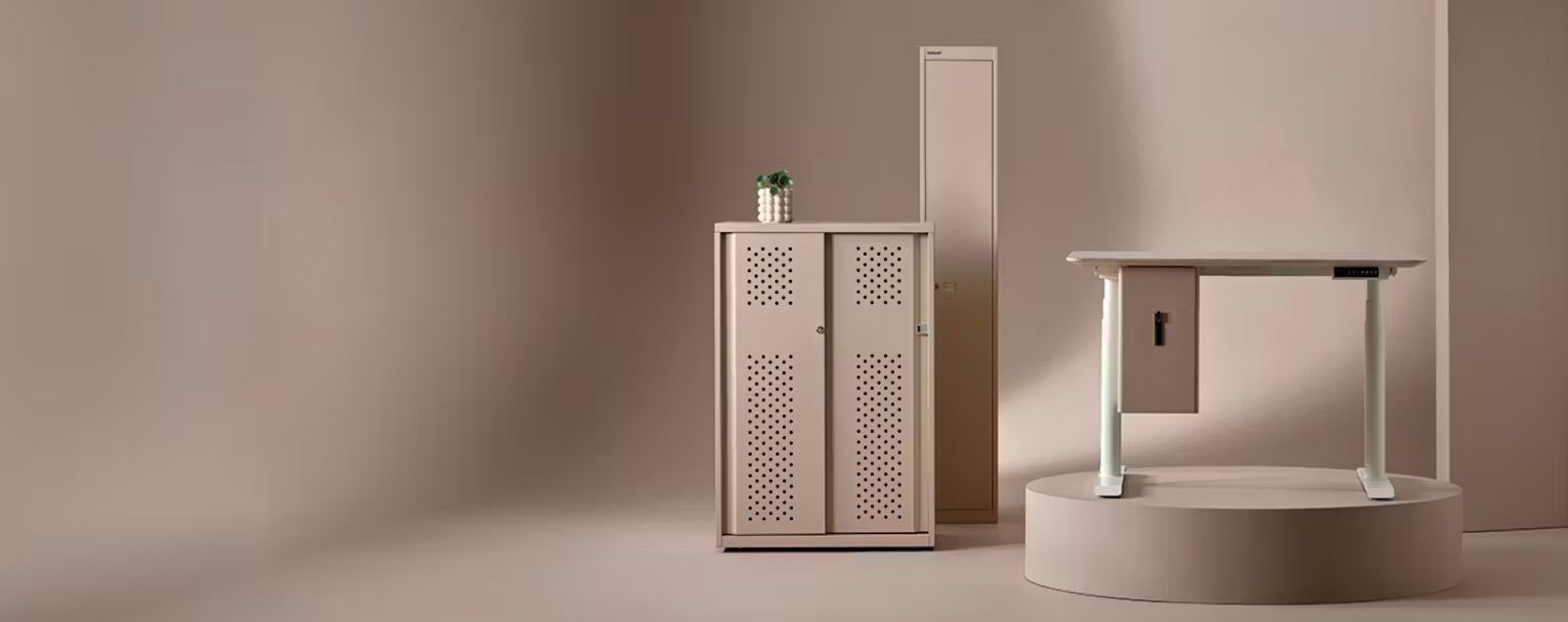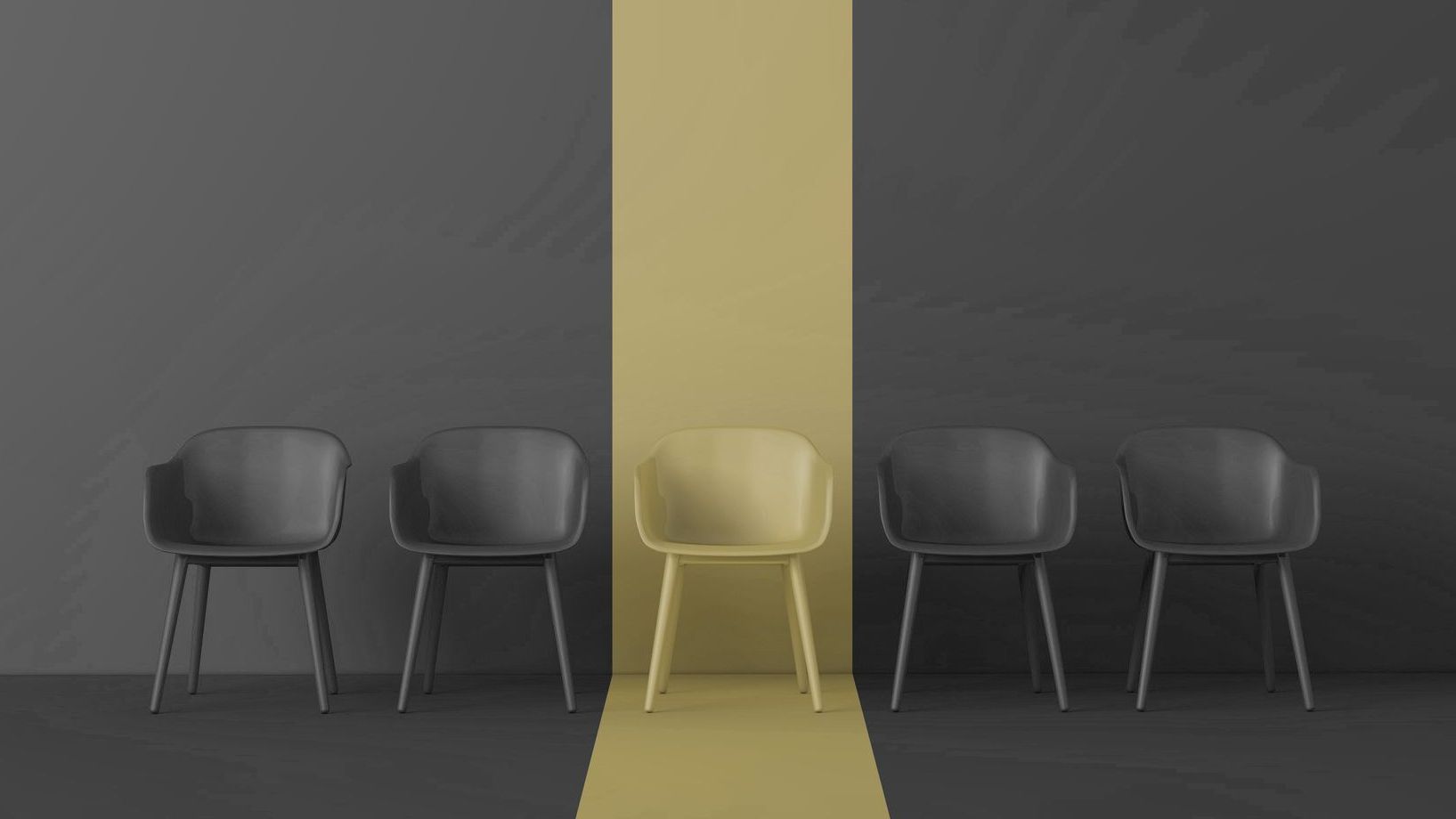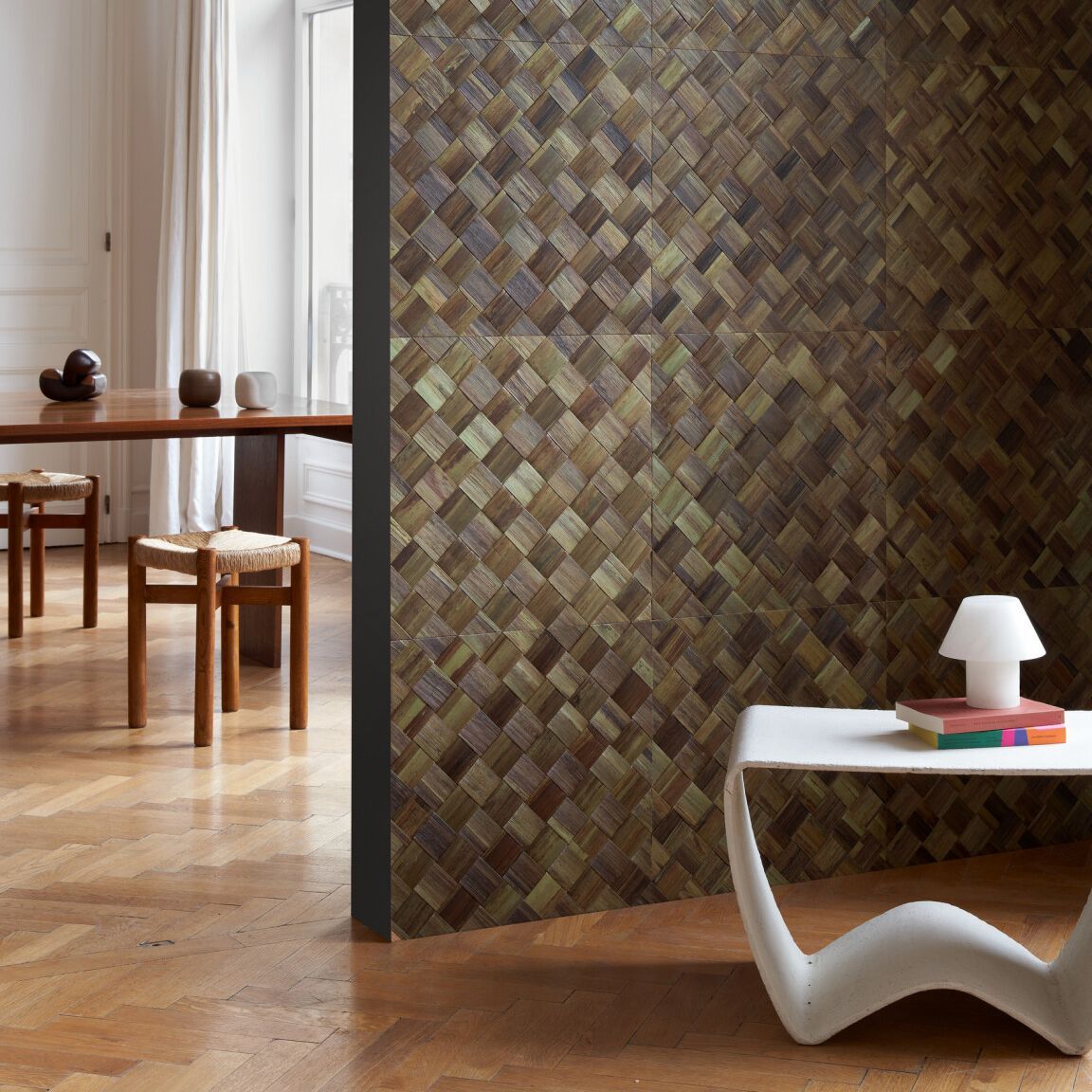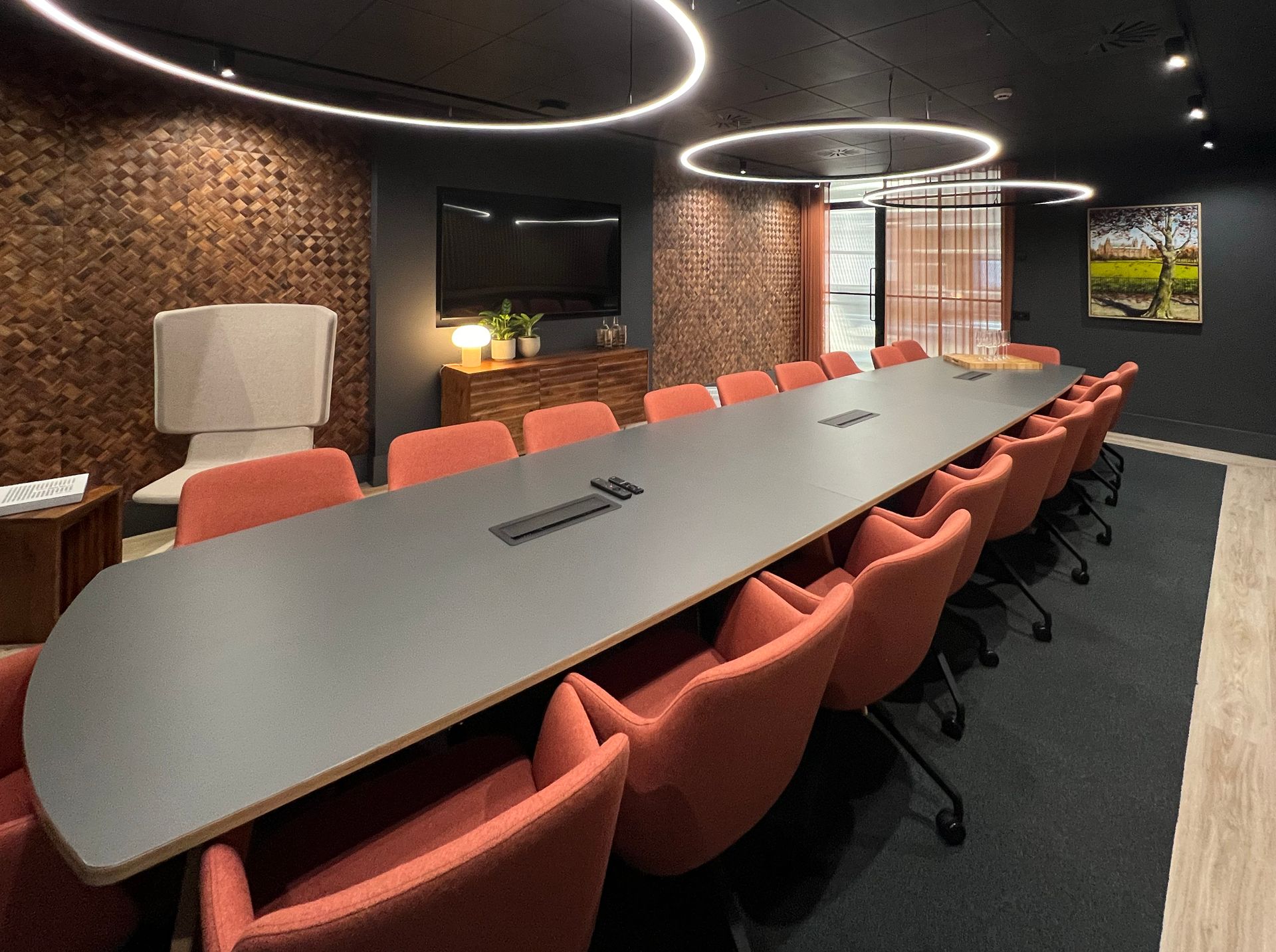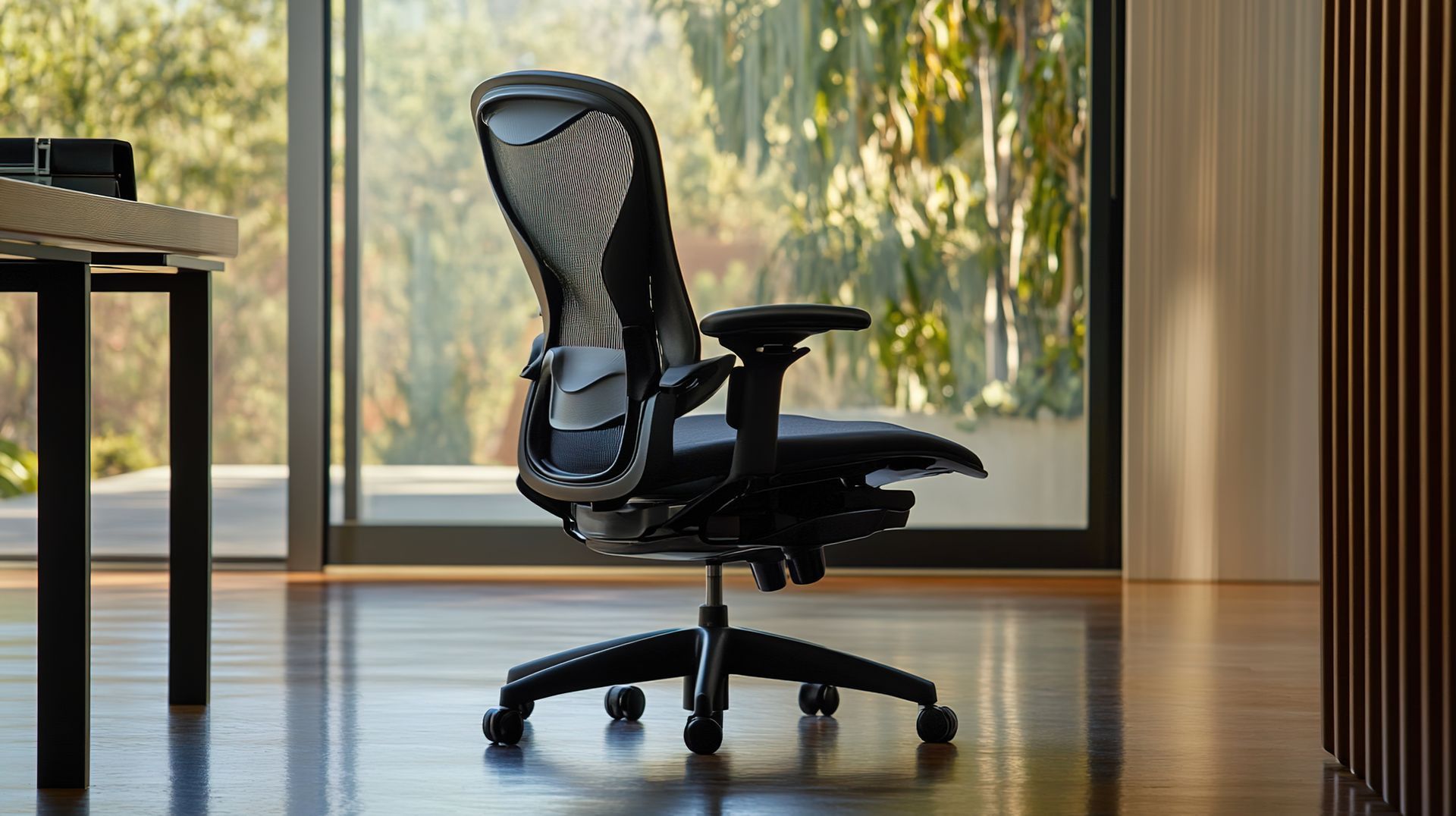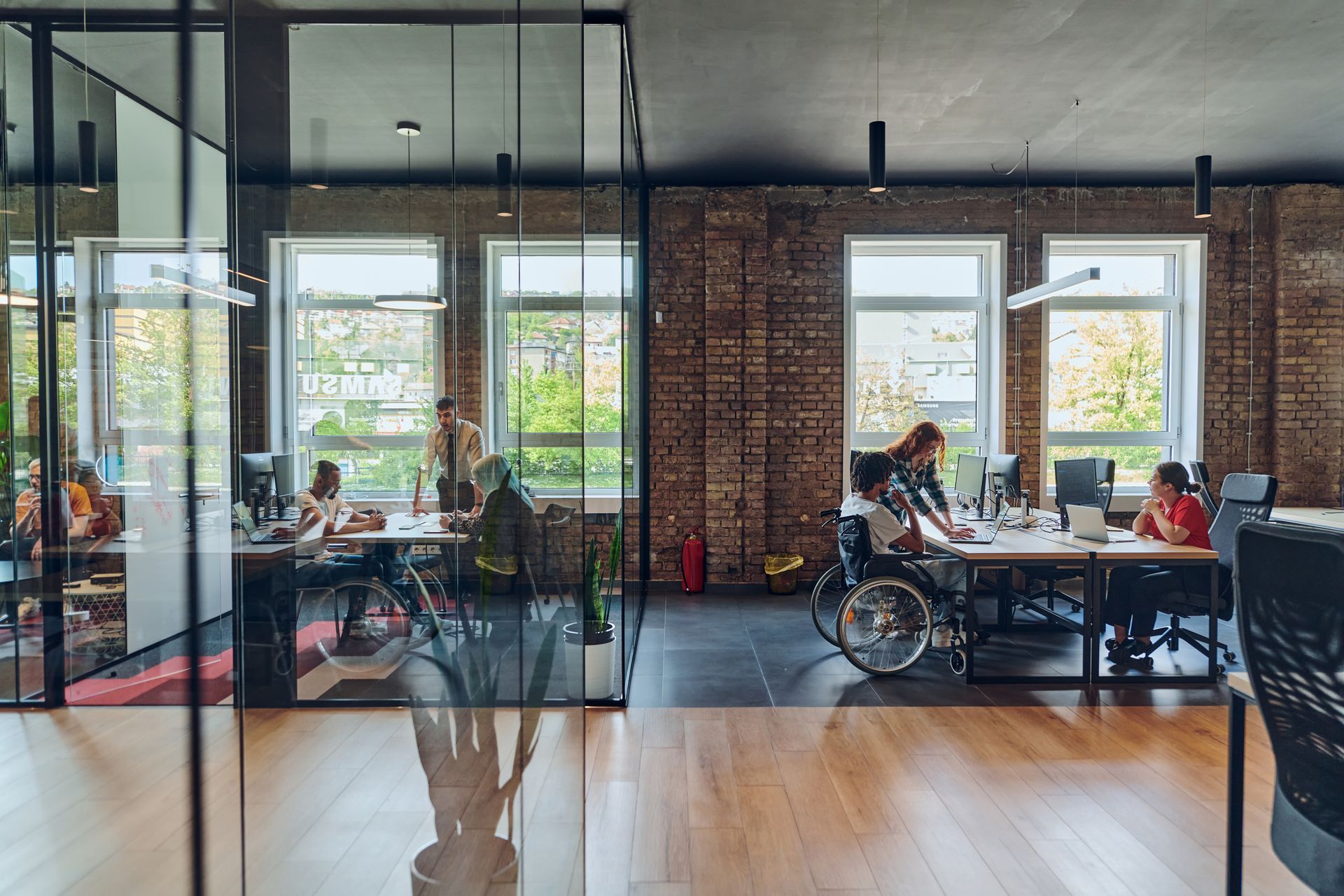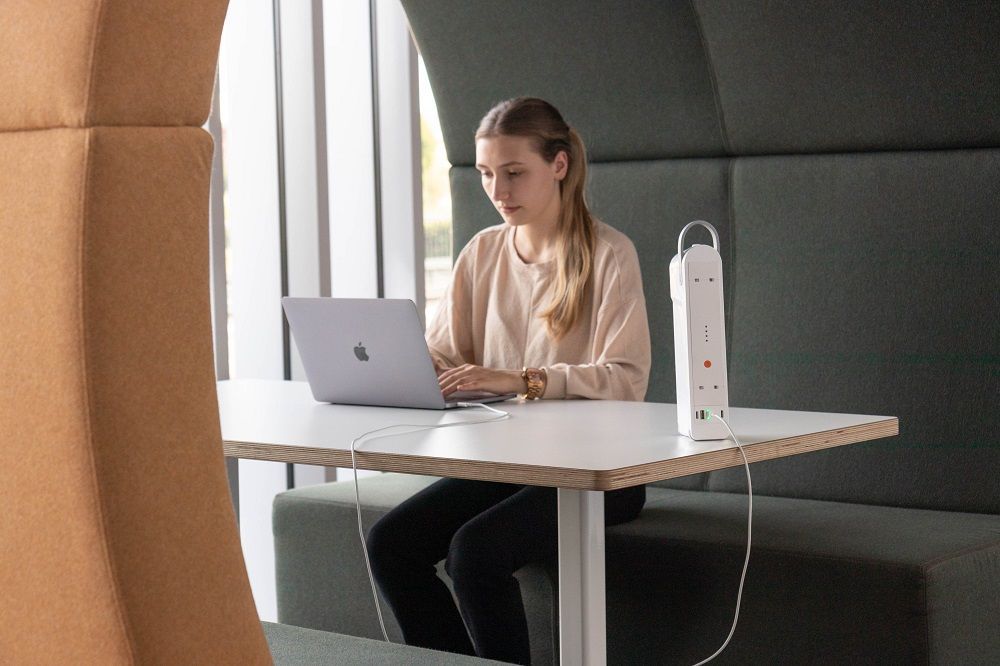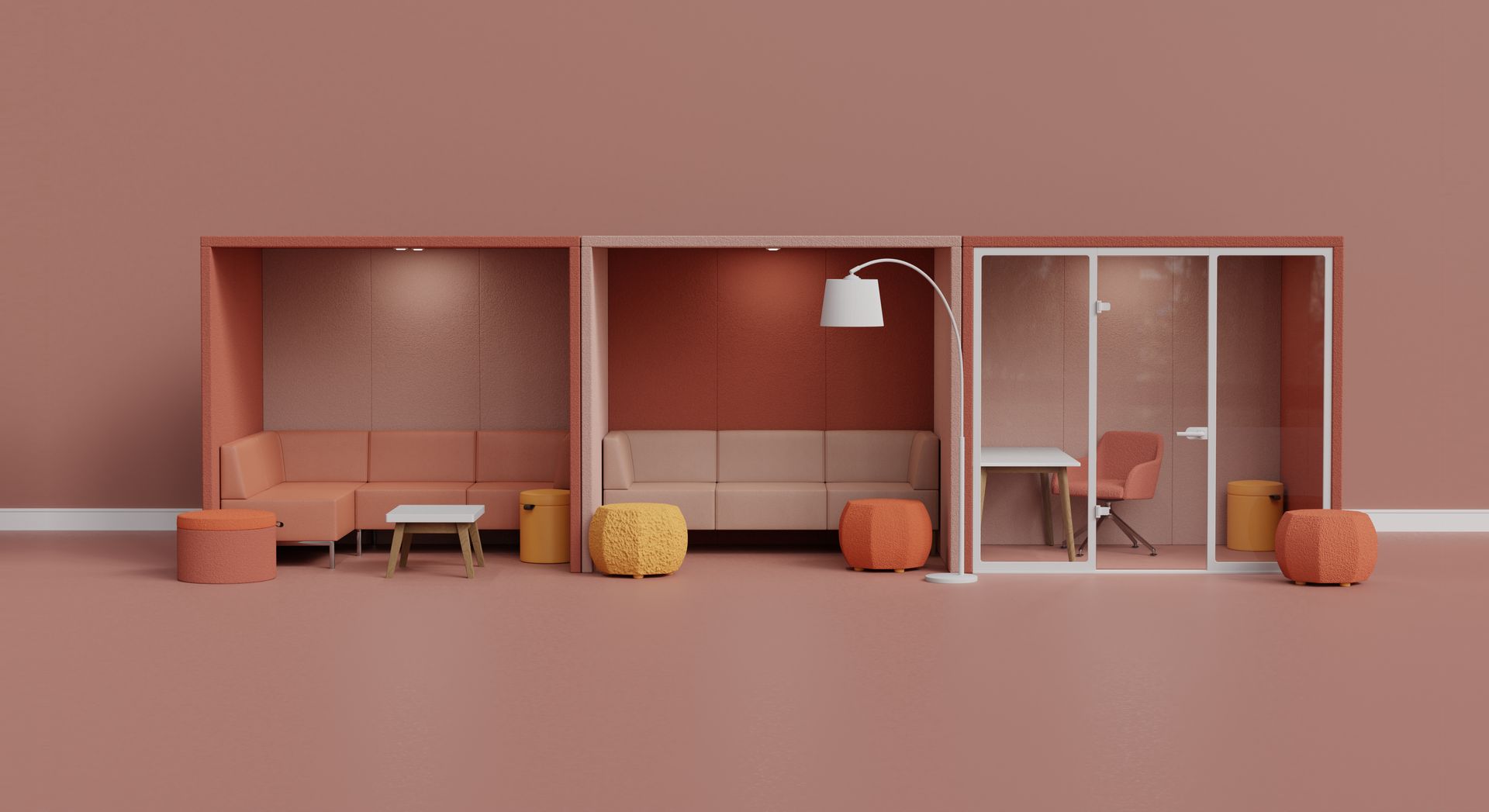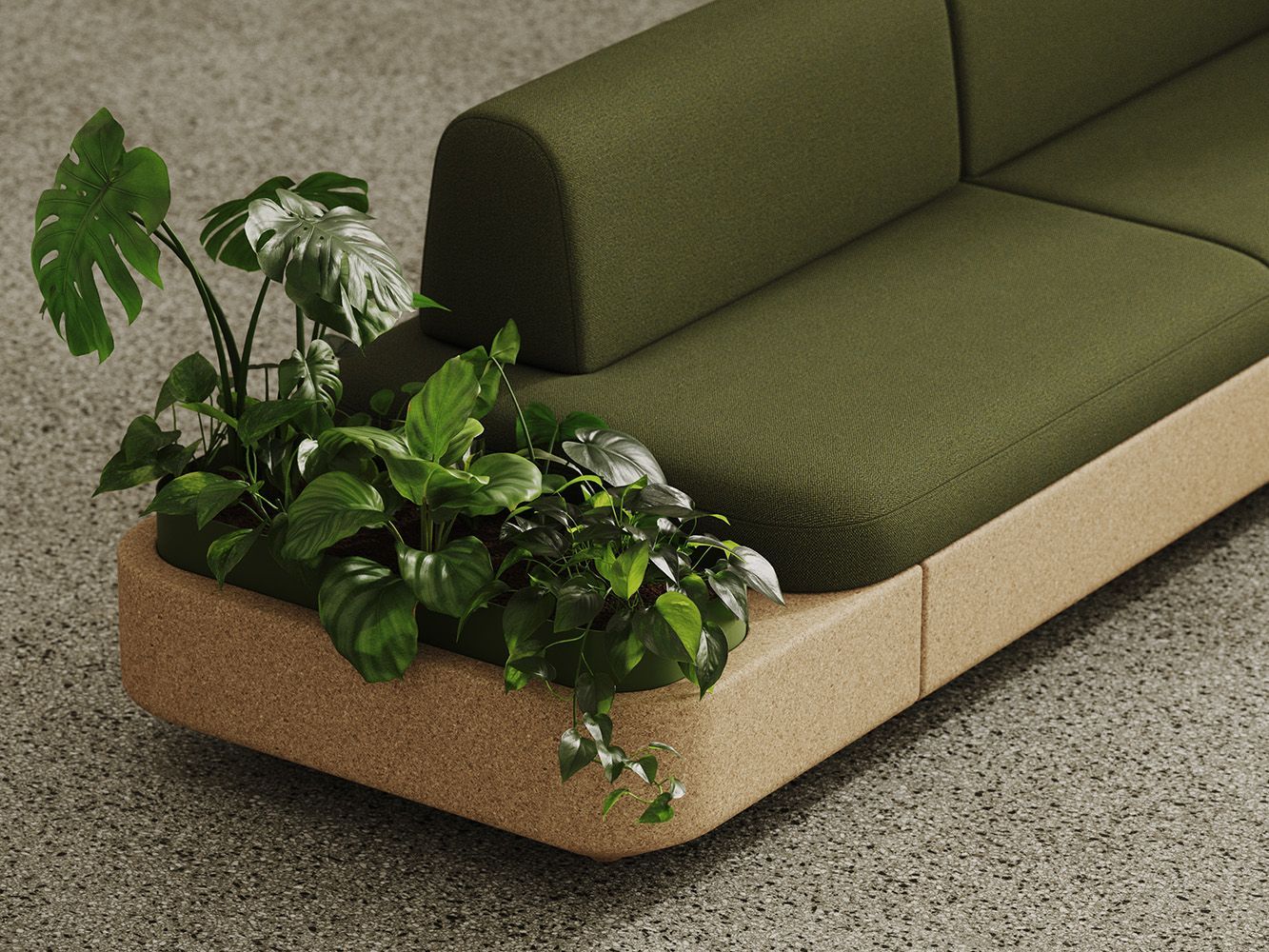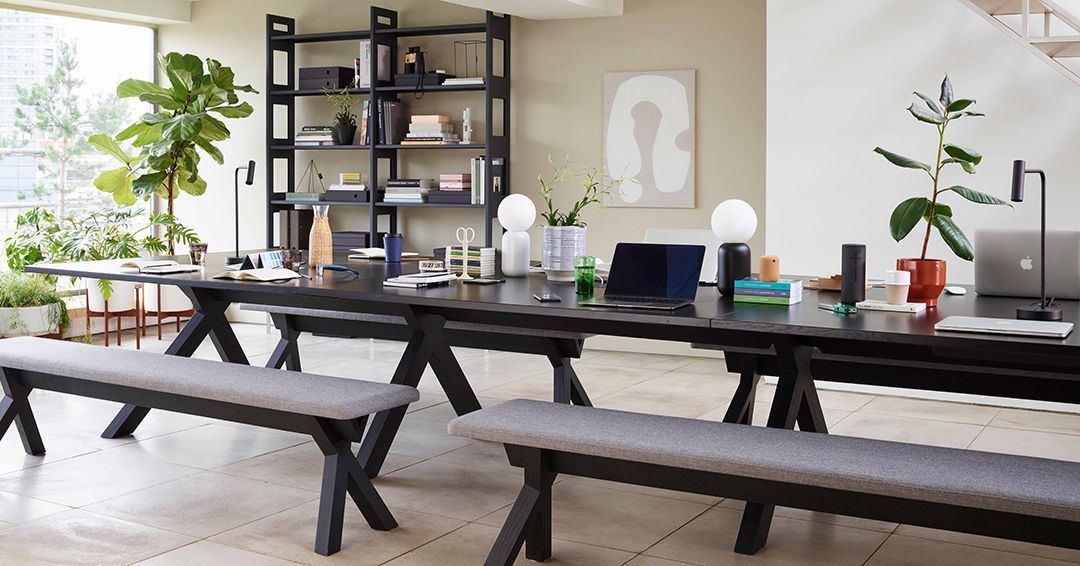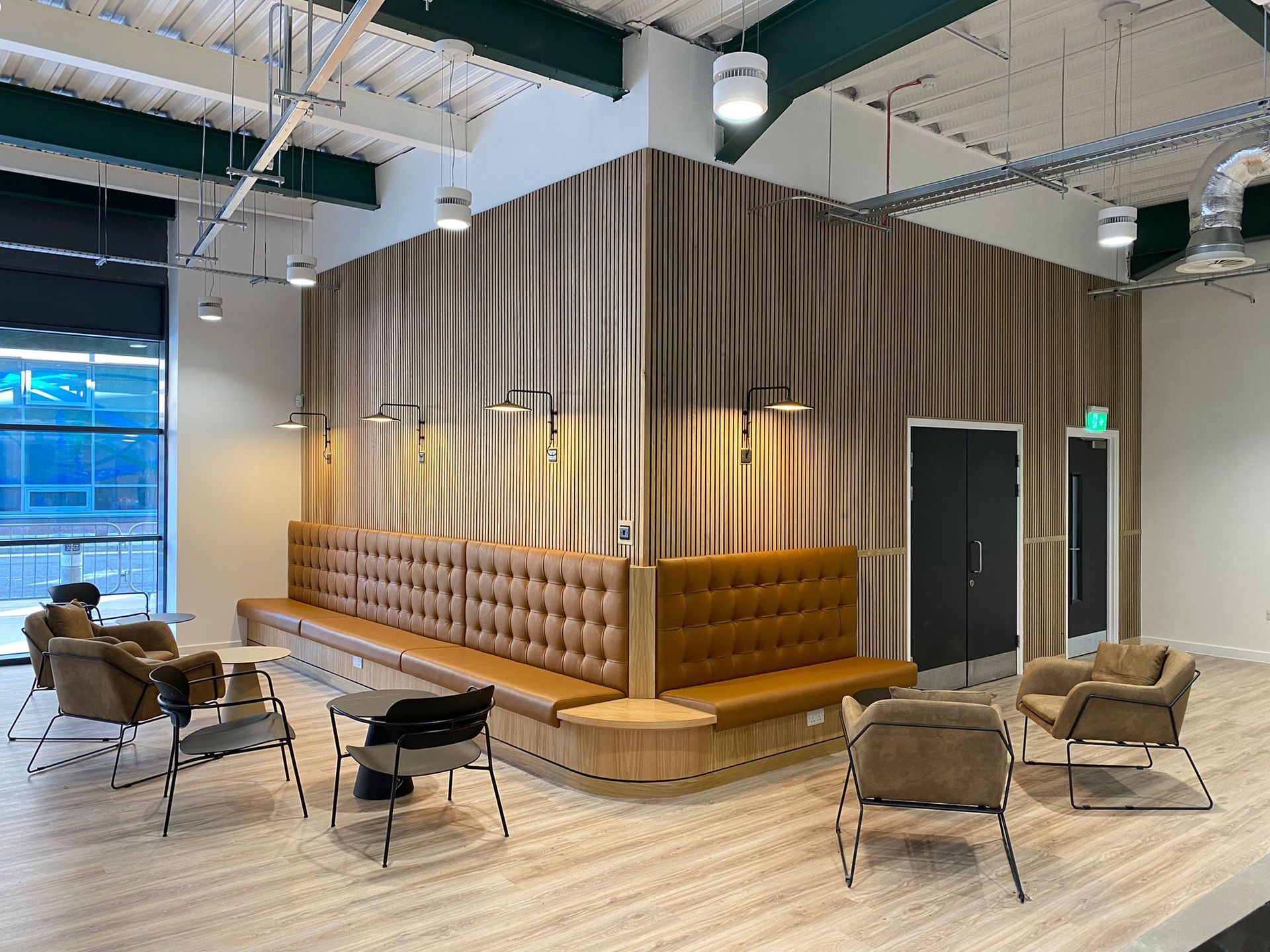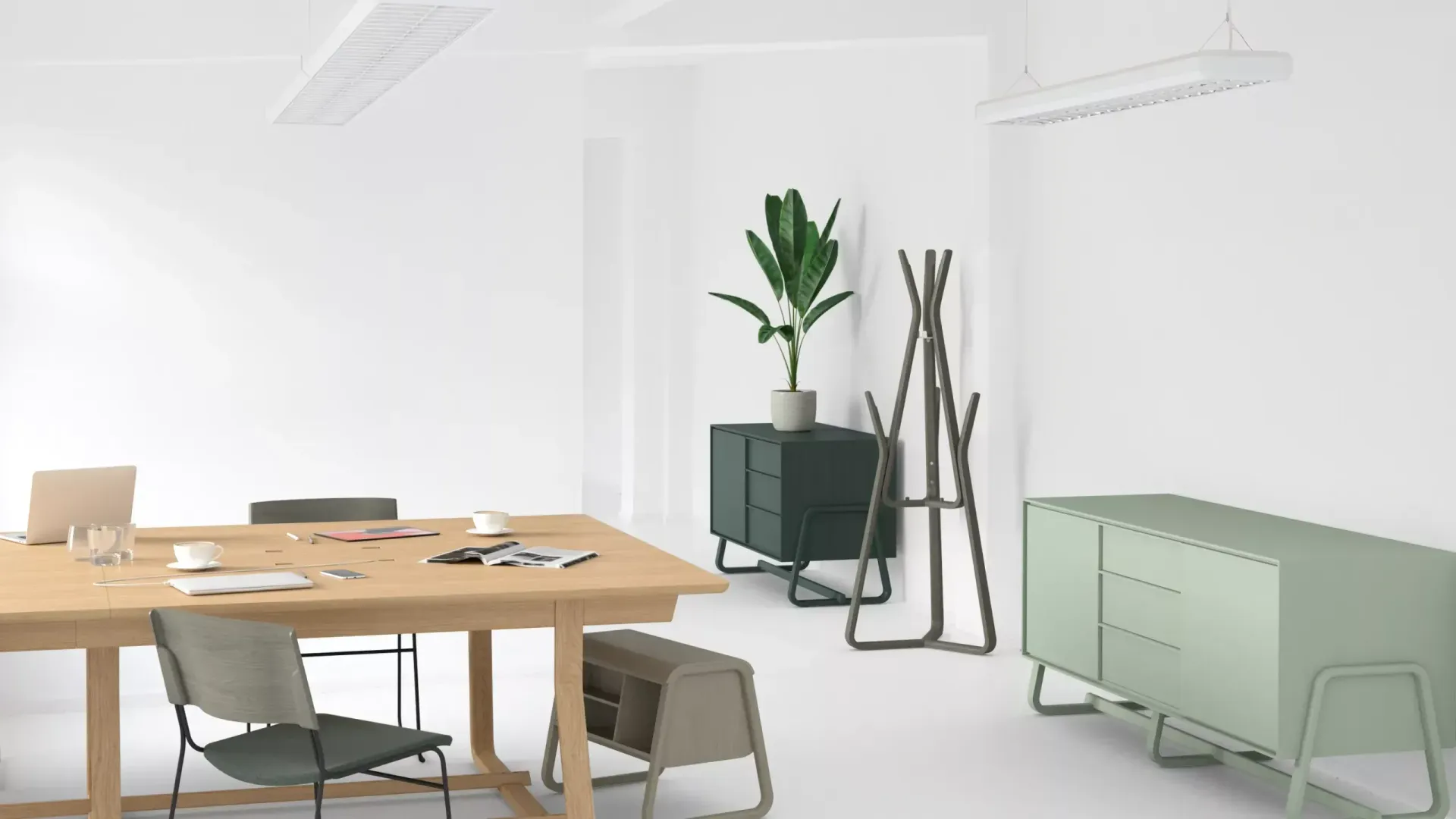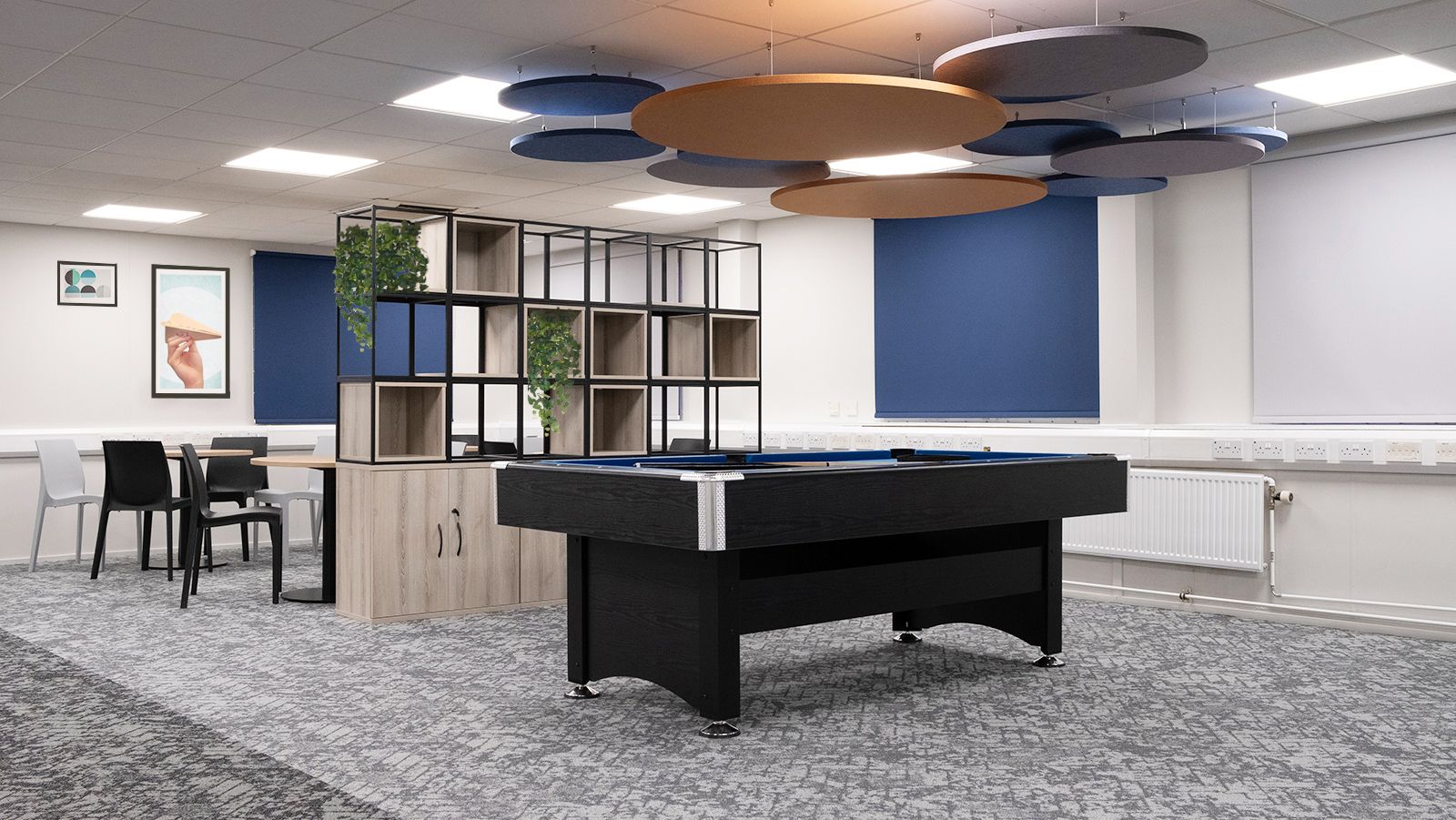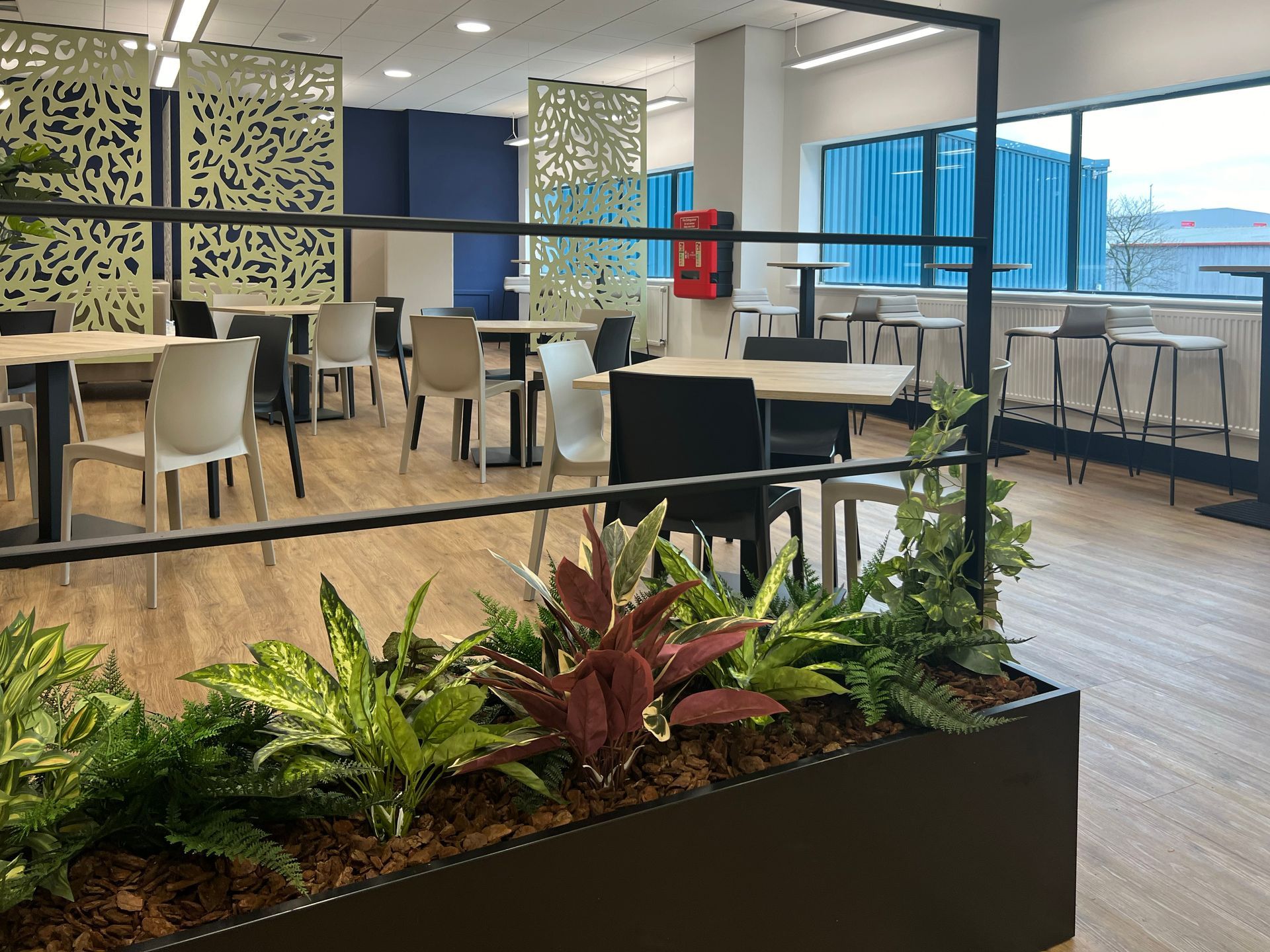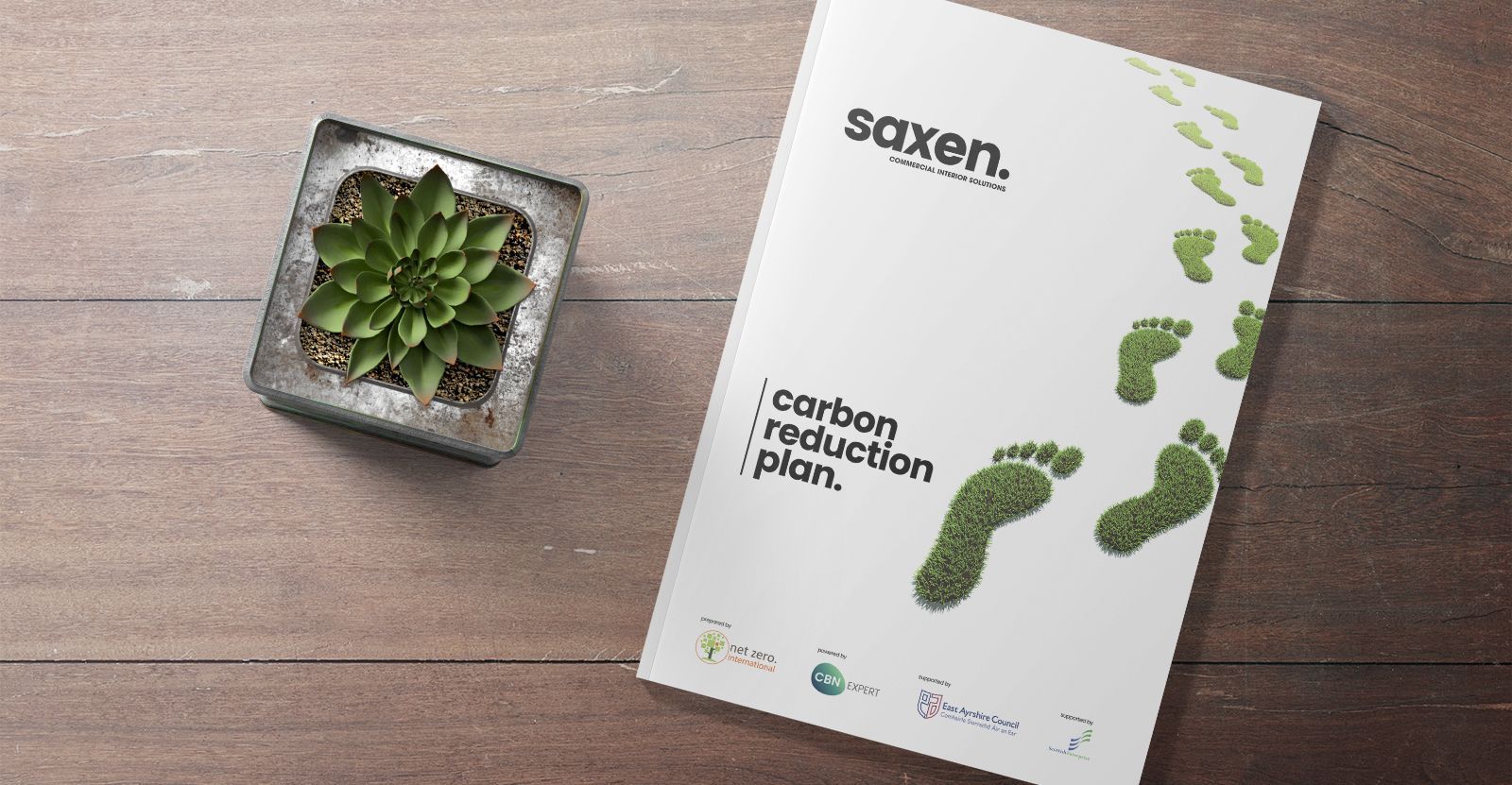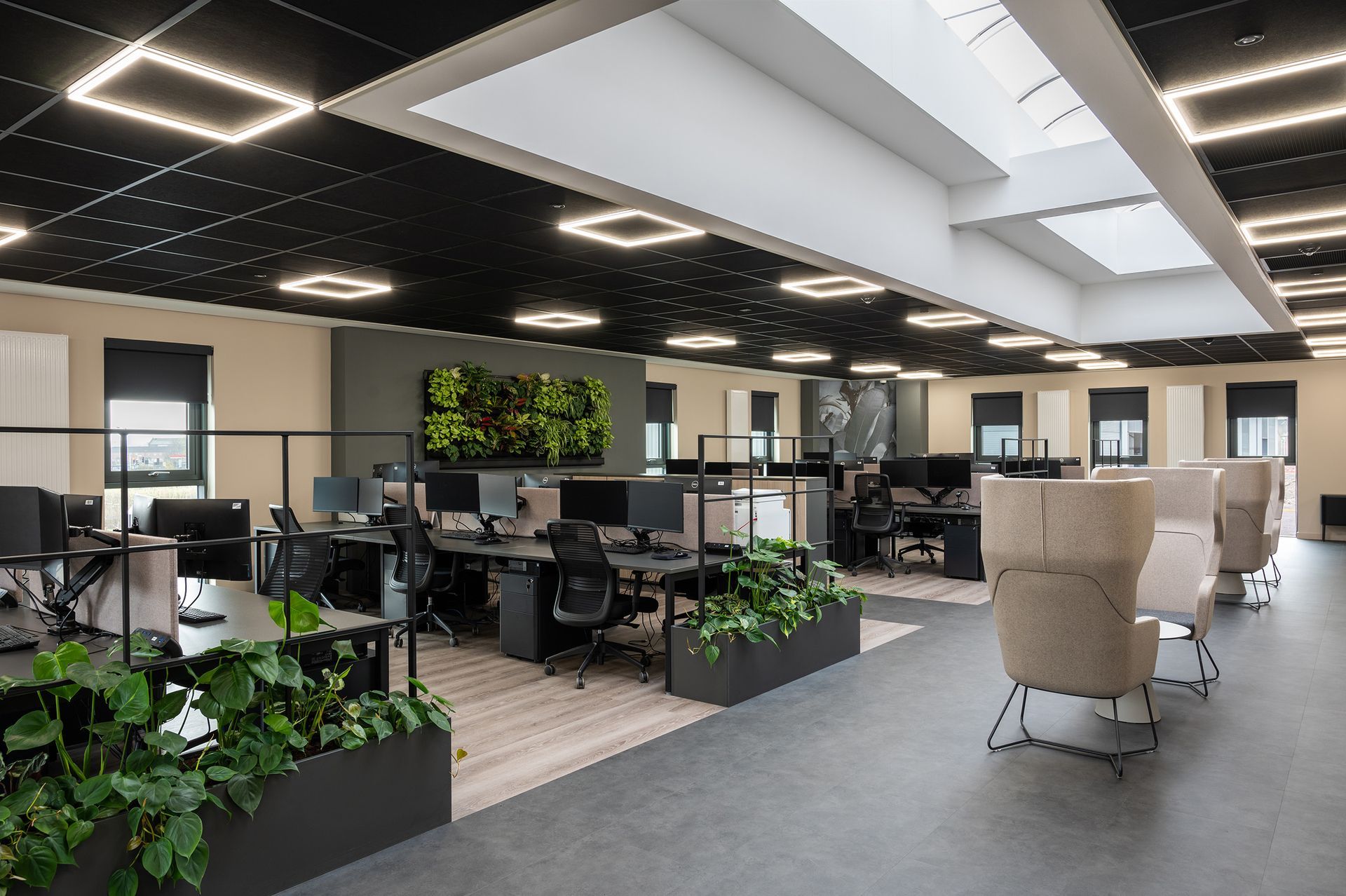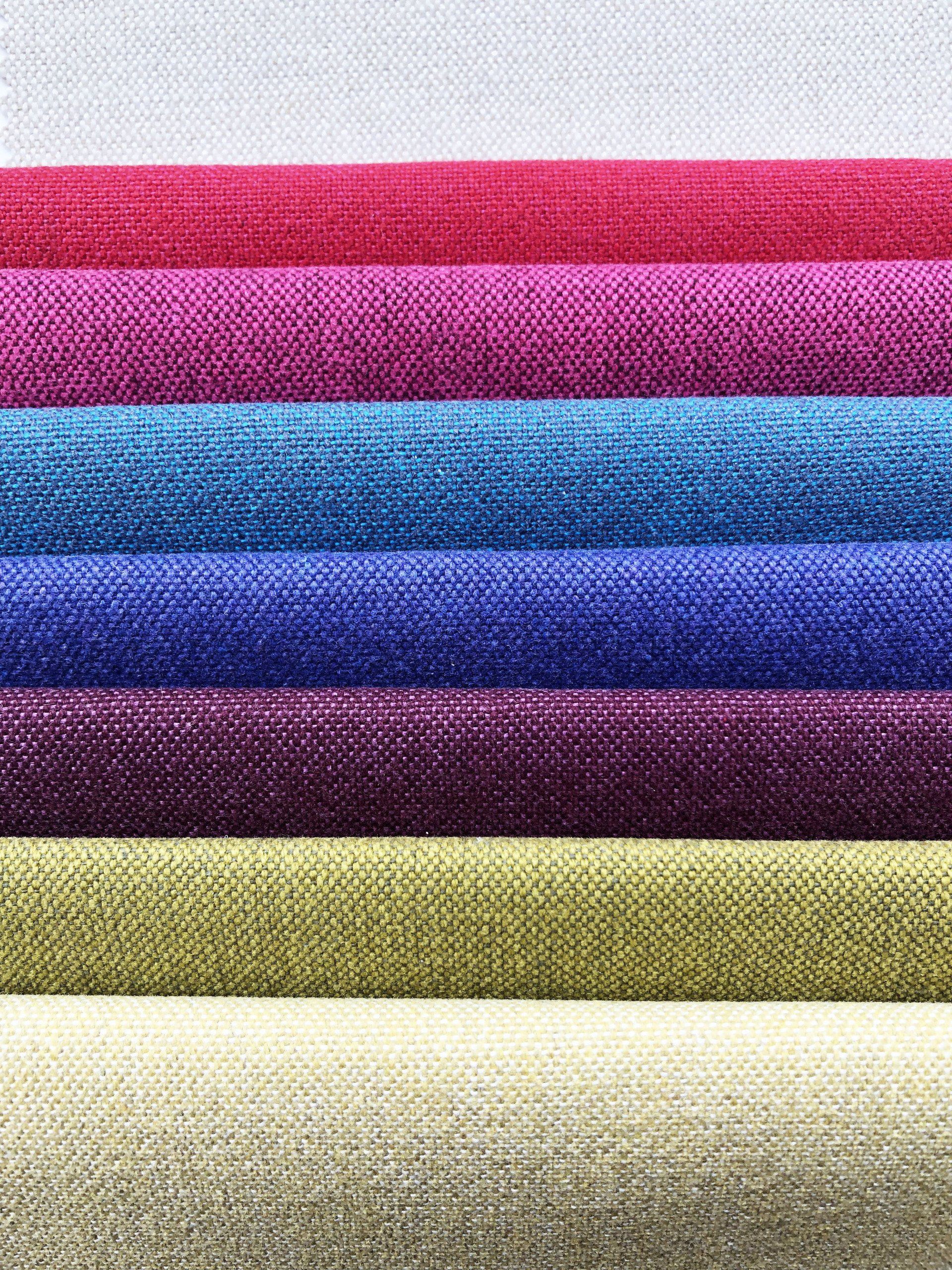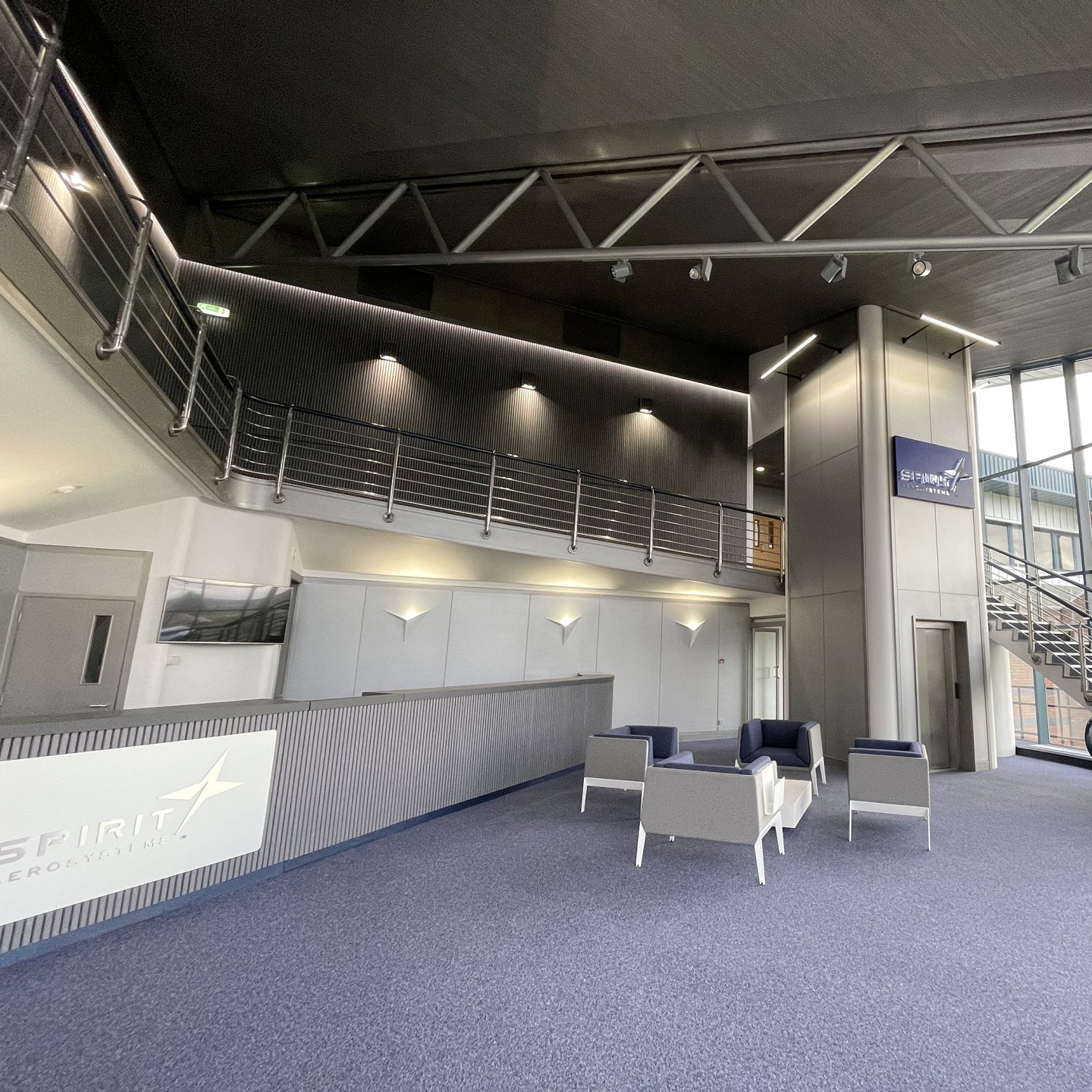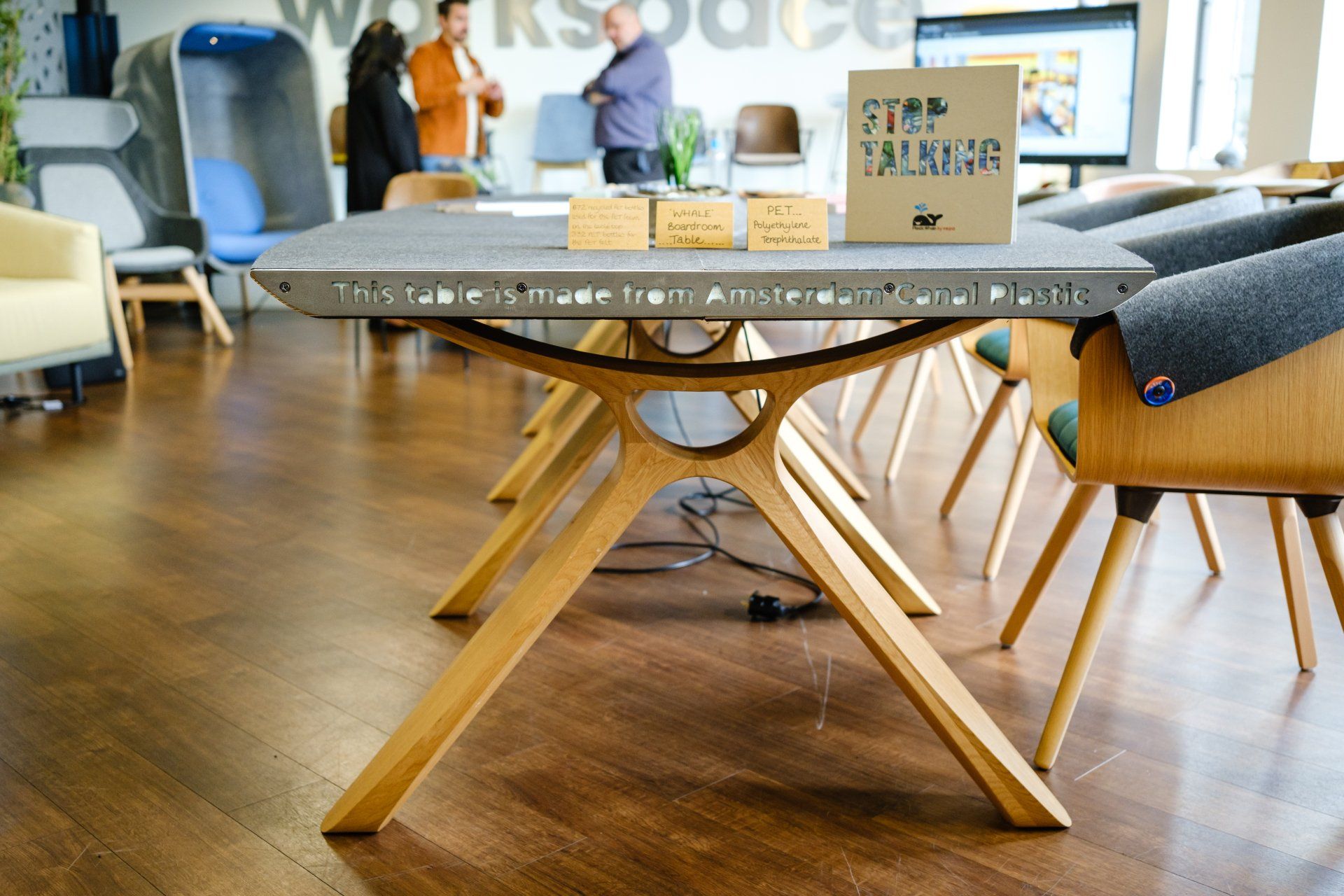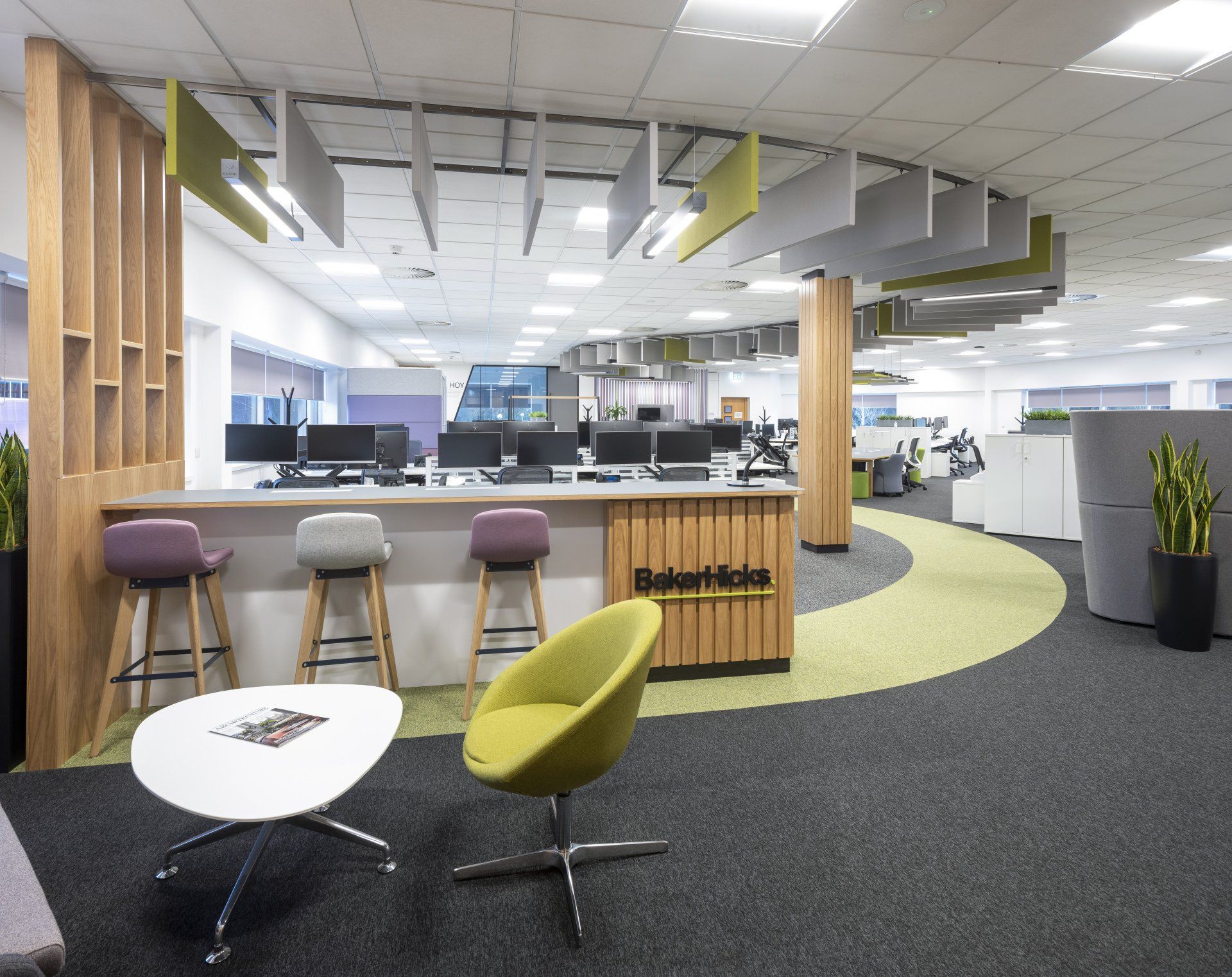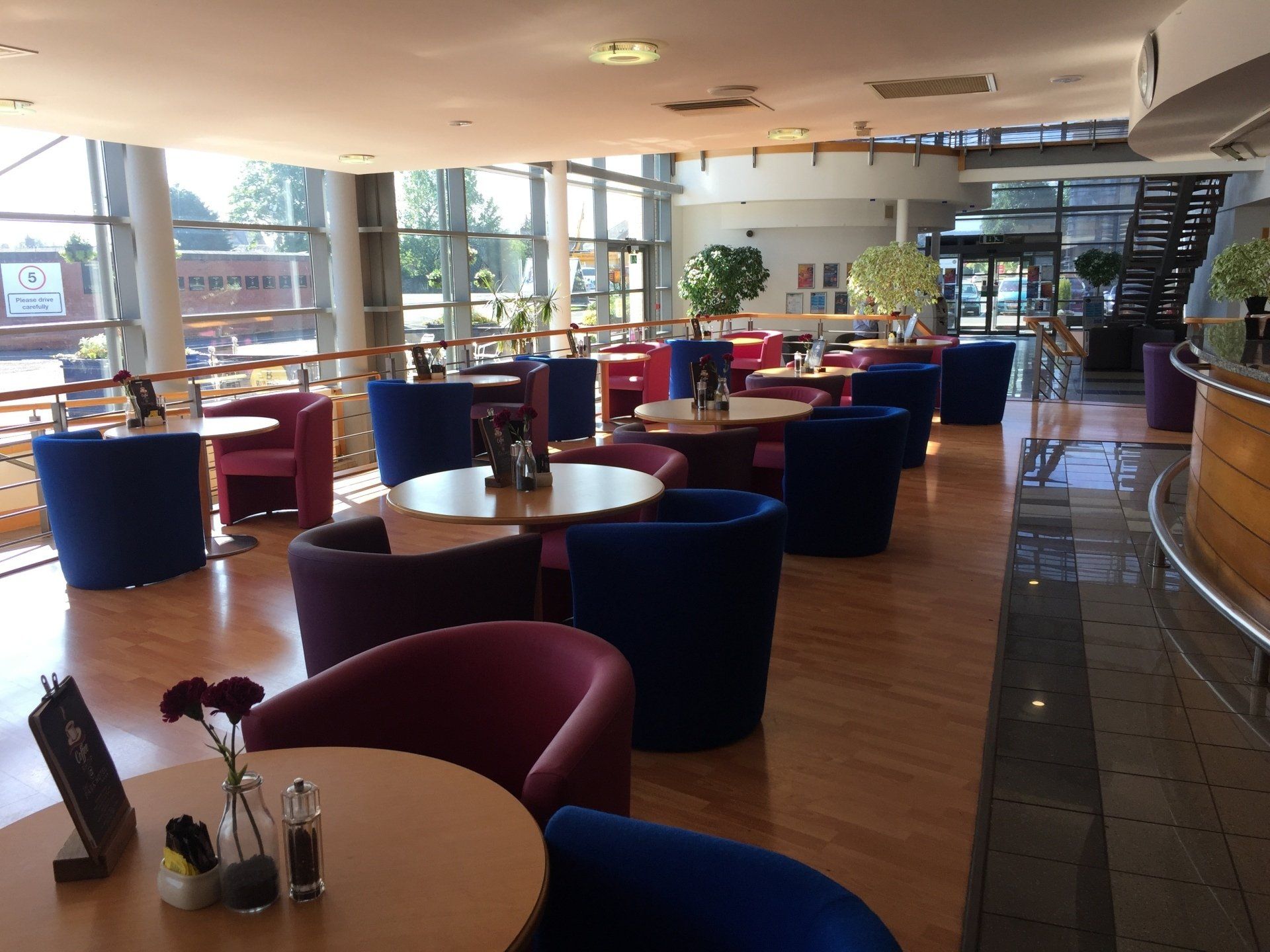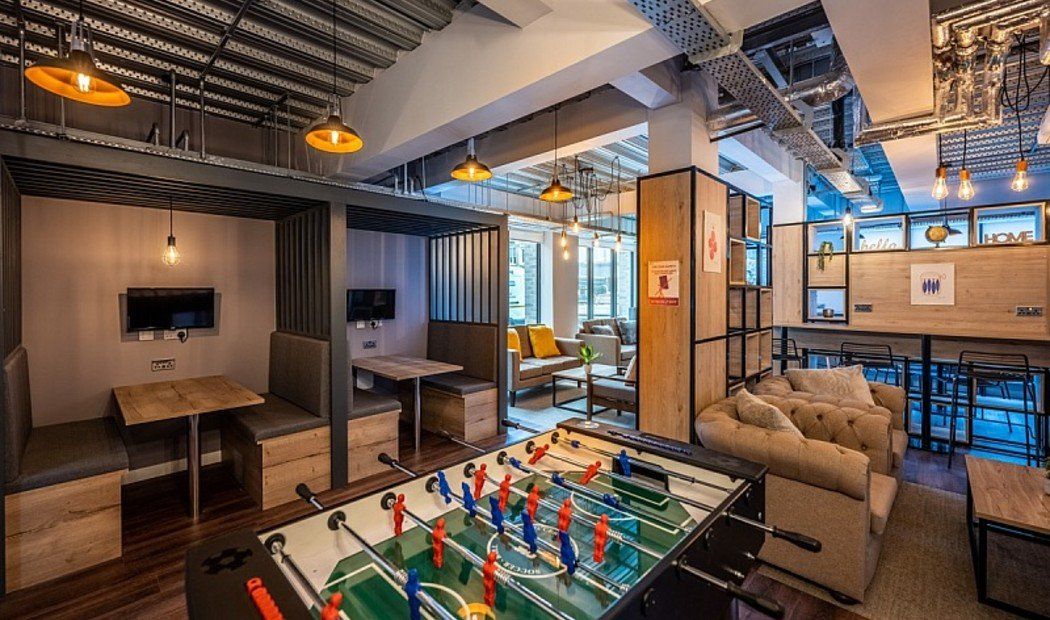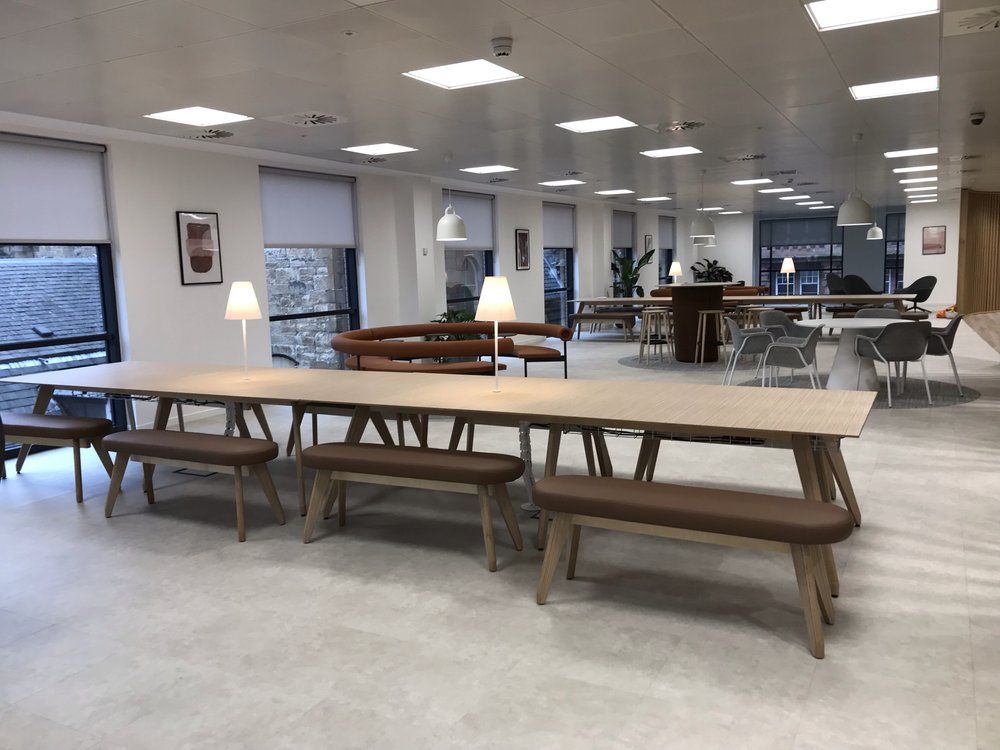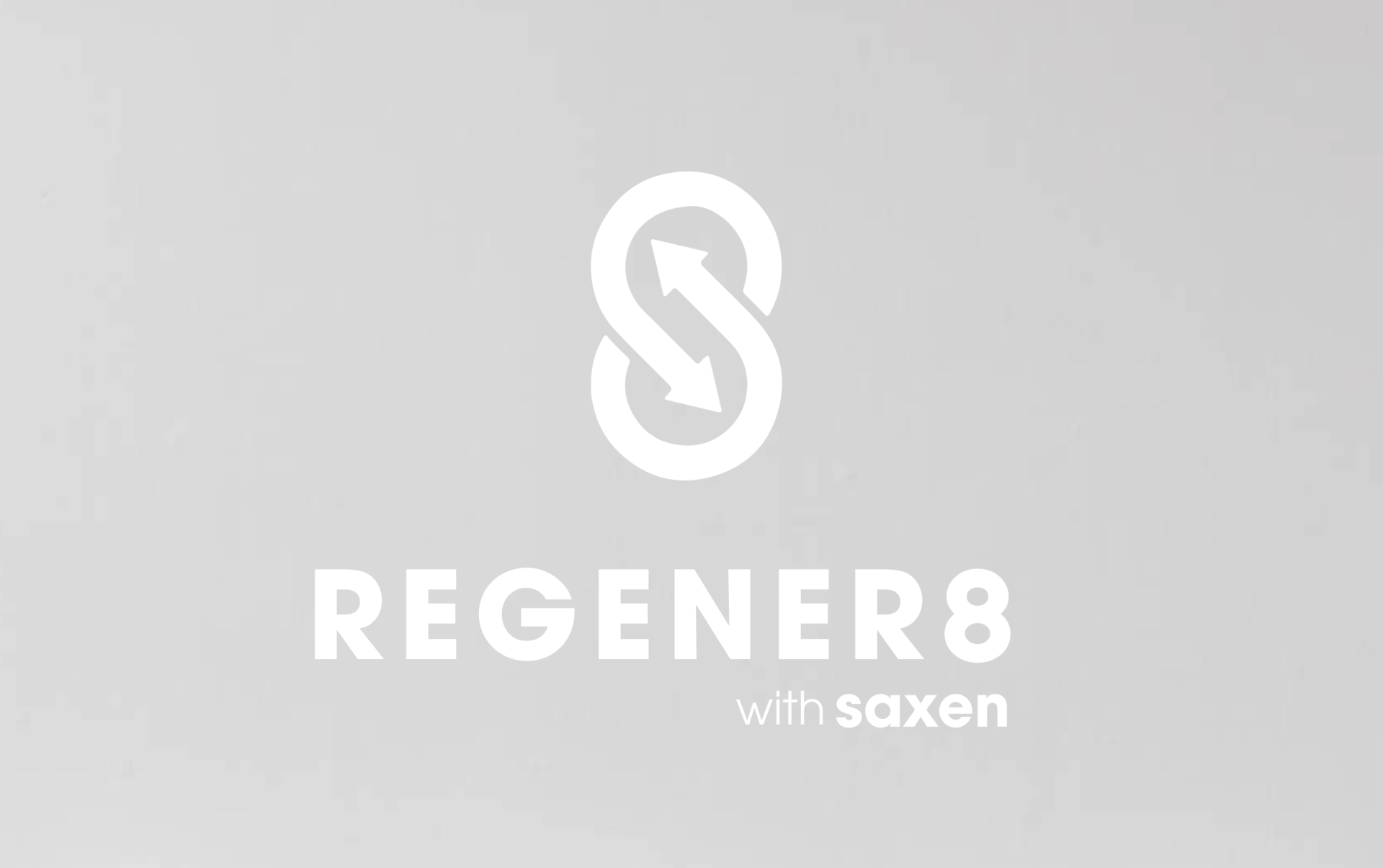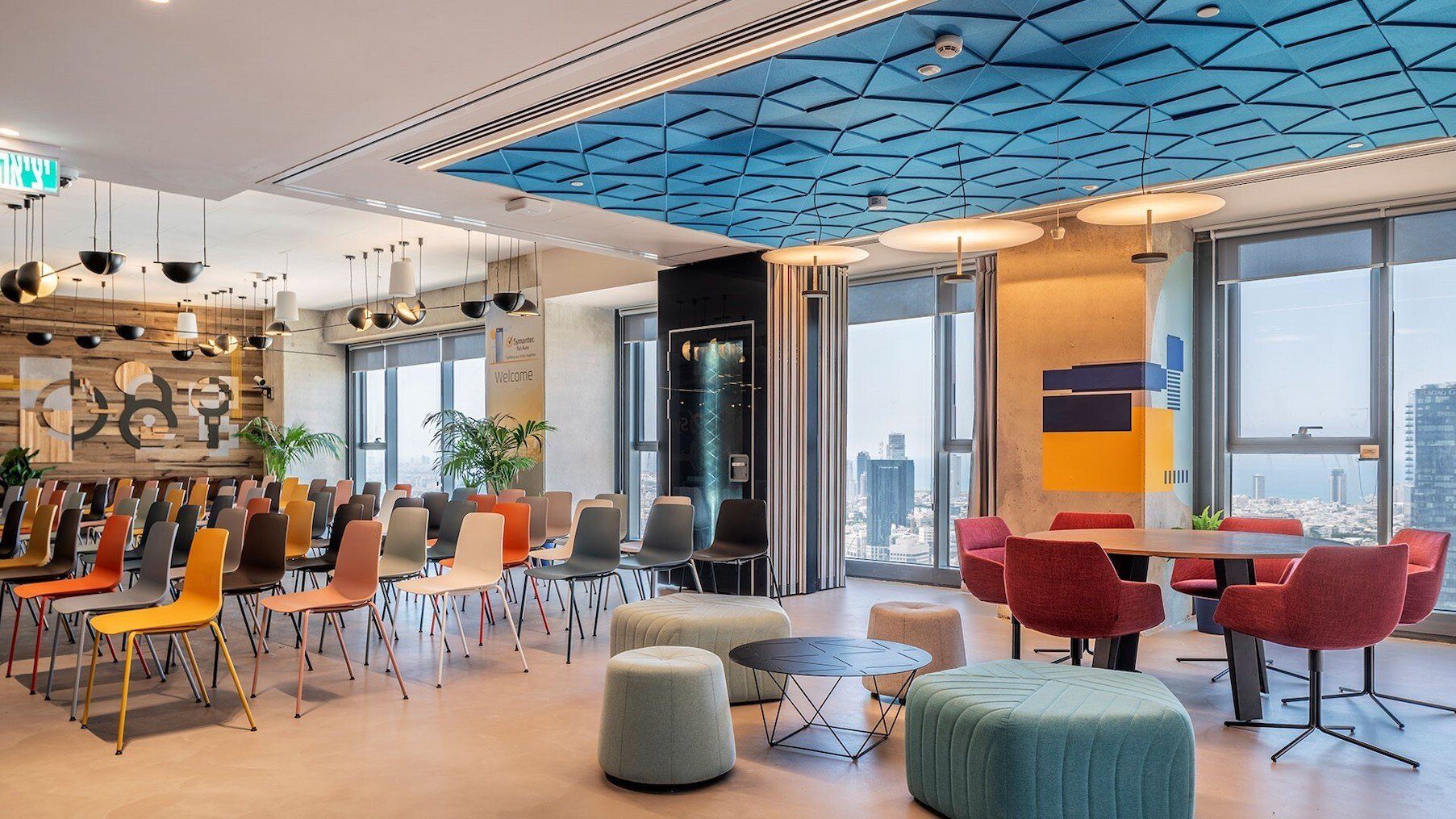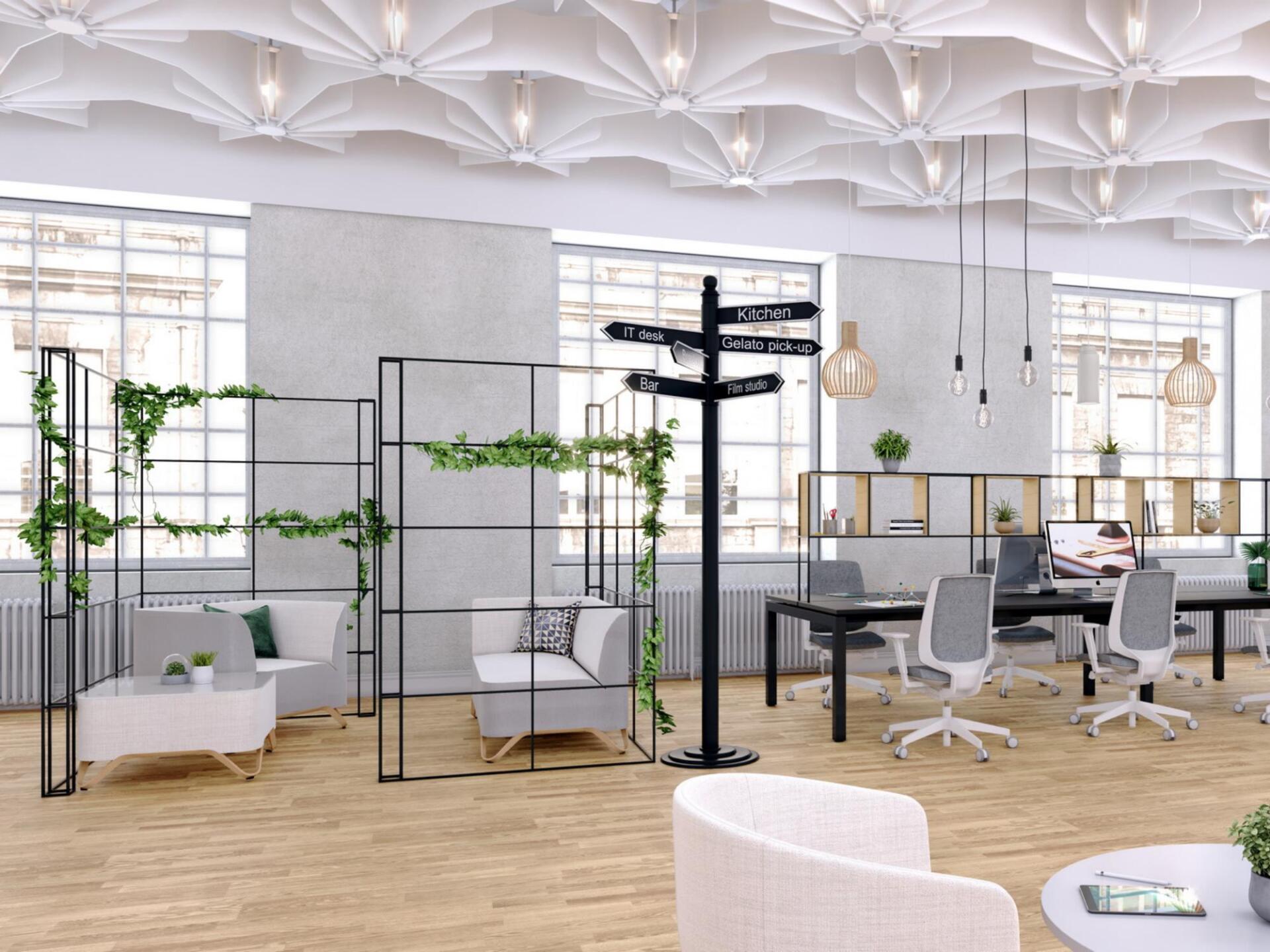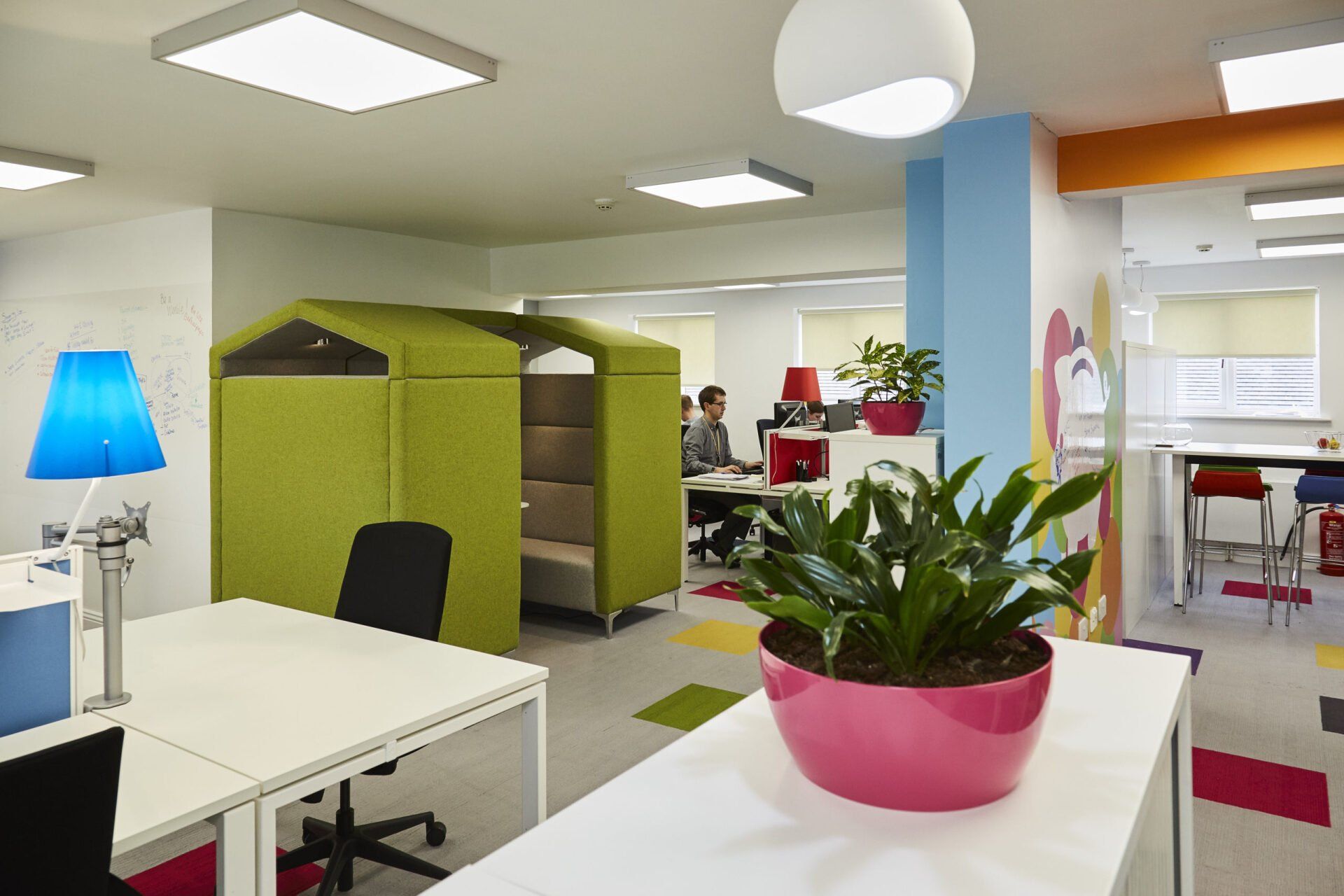Selecting environmentally friendly materials
Saxen has a company-wide objective of achieving Net Zero by 2050. One of the ways we're aiming to achieve this is by exclusively sourcing from manufacturers that use sustainable furniture materials. Beyond aesthetics, furniture should also be durable, circular, and safe.
Saxen supply furniture made from a range of high-quality natural resources. Not only does this include the usual - bamboo, metal, wood - but you'll also find furniture made from more innovative materials - recycled polyester, hemp, and glass. Creating an eco workspace is one way to reconnect with nature. We invite you to explore the essence of nature in the workspace with our list of eco-friendly furniture materials.
What is sustainable furniture?
When looking for sustainable office furniture, it's important to understand what sustainability is and what makes a piece 'green'.
Sustainability refers to the practice of using resources in a way that protects the Earth long-term (source). Unsustainability occurs when we consume resources more quickly than they can be replenished, eventually depleting the source. In the context of furniture, sustainability involves crafting pieces from renewable or recycled materials, putting the planet first.
This looks like:
> Using renewable materials.
> Using non-toxic materials.
> Avoid materials that can't be recycled.
> Using renewable energy sources.
> Long-lasting and versatile furniture.
> Up-cycled furniture.
> Organic furniture.
> Fair-trade furniture.
> Eco-friendly delivery and packaging.
Sustainable furniture materials for your office
In the current landscape, choosing sustainable furniture materials is easier than ever before. There are numerous innovative, original, and sustainable manufacturers who can transform your workspace with their products. Explore this curated list to garner inspiration for your workspace, featuring eco-friendly materials and manufacturers committed to sustainability.
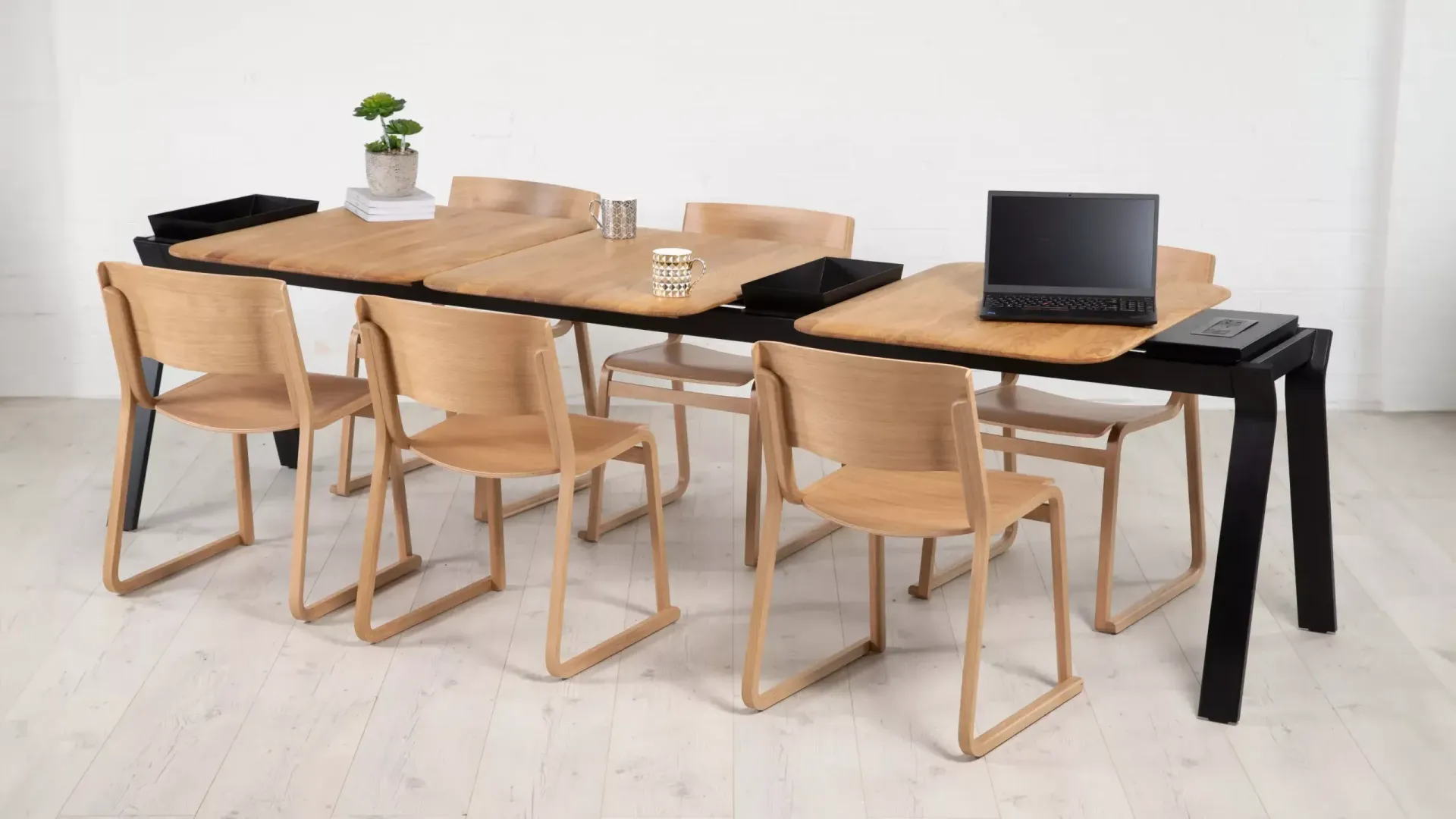
Wood
Saxen guarantees the responsible sourcing of all its furniture, sourced exclusively from FSC-certified sustainable forests. These forests adhere to stringent environmental and economic standards, ensuring the preservation of biological diversity and providing local benefits. The wood is harvested sustainably, with no net loss of forest, allowing the trees to continue playing a crucial role in climate regulation.
Steel storage by Bisley, supplied by Saxen
Steel
Steel is considered one of the most sustainable materials due to its 100 per cent recyclability and 93 per cent recycled content (source). This circular material can repeatedly avoid landfills or incinerators, being reused time and time again in various forms, including desks, storage units, and lockers.
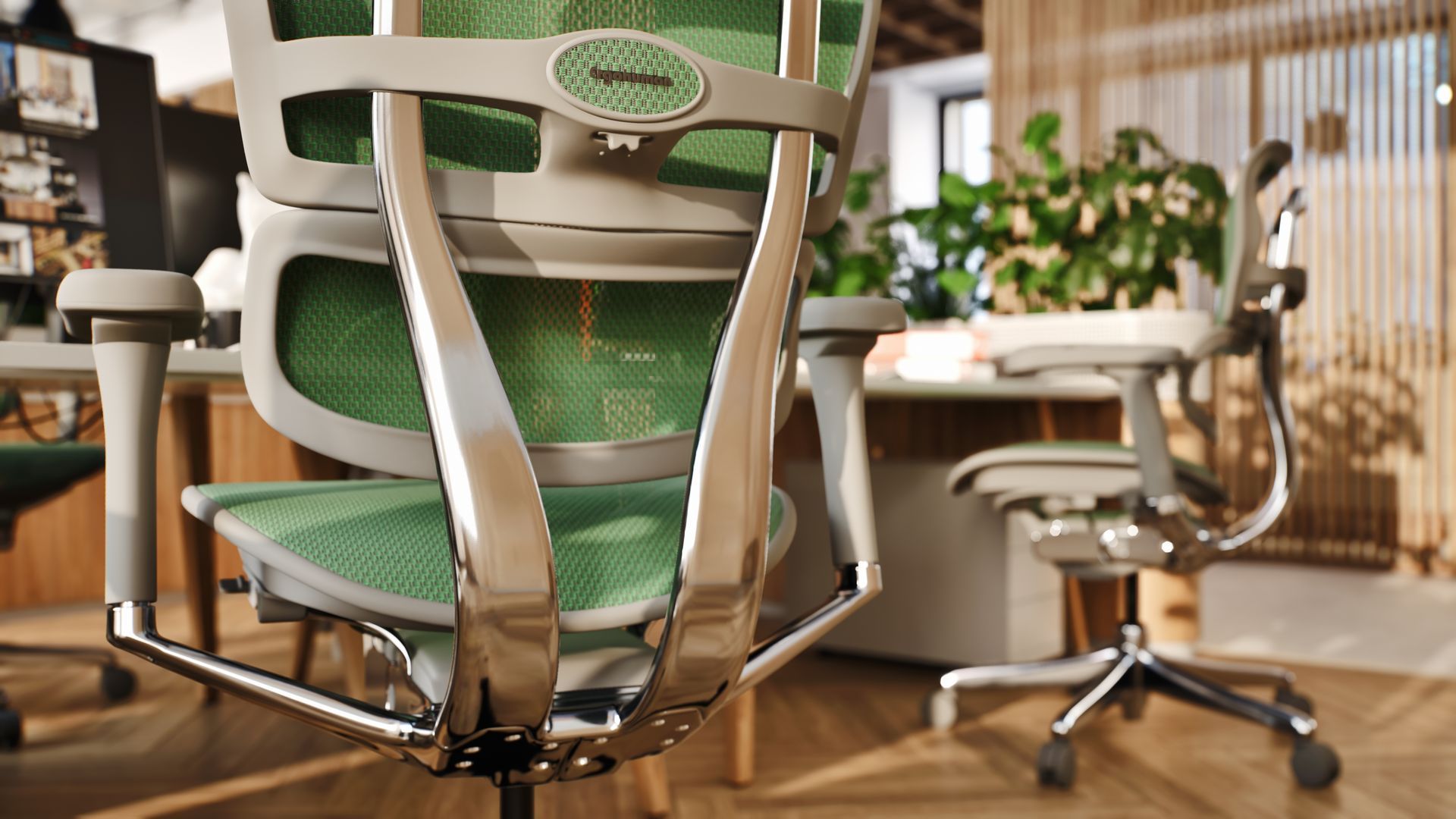
Aluminium
Like steel, aluminium can be infinitely recycled. Recycling aluminium also saves 95 per cent of energy compared to producing aluminium from raw materials (source). Aluminium can be used for many products, such as bases for ergonomic office chairs.
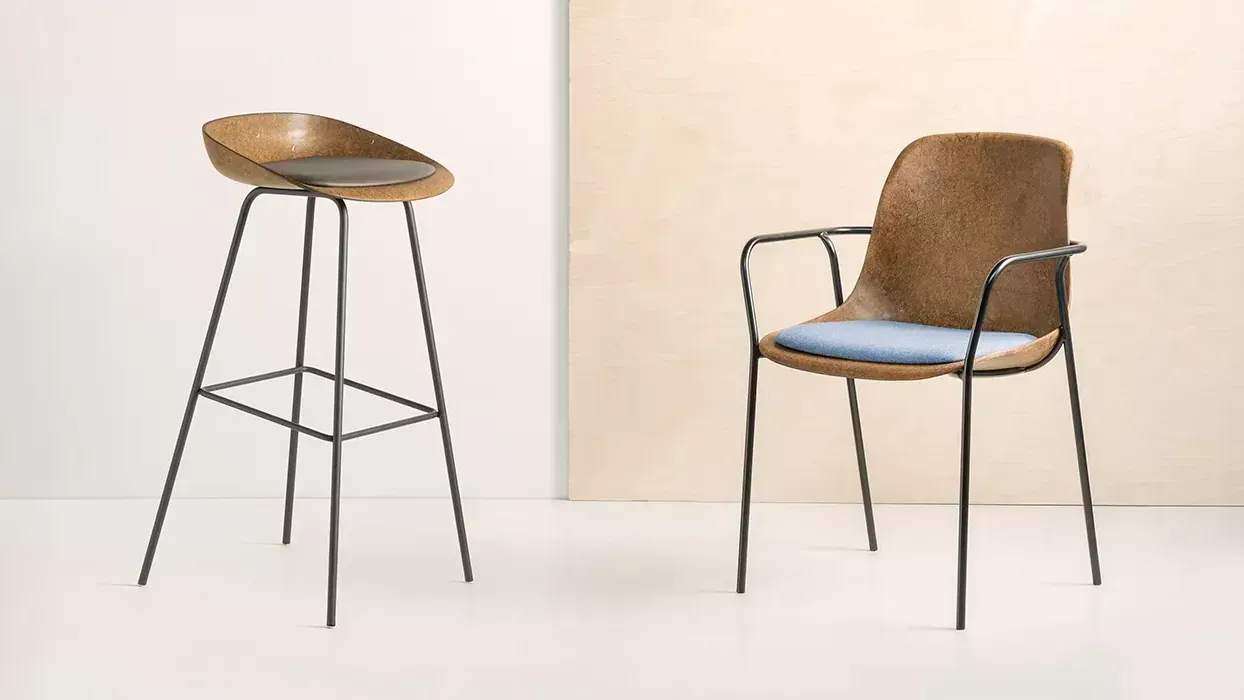
Hemp
Hemp is a versatile plant that contributes to many fresh and organic space ideas while also reducing companies' carbon footprints. In contrast to cotton, hemp cultivation demands less water and fewer pesticides, establishing it as an environmentally friendly alternative (source). Additionally, hemp grows quickly, and every part of the plant can be used in some way.
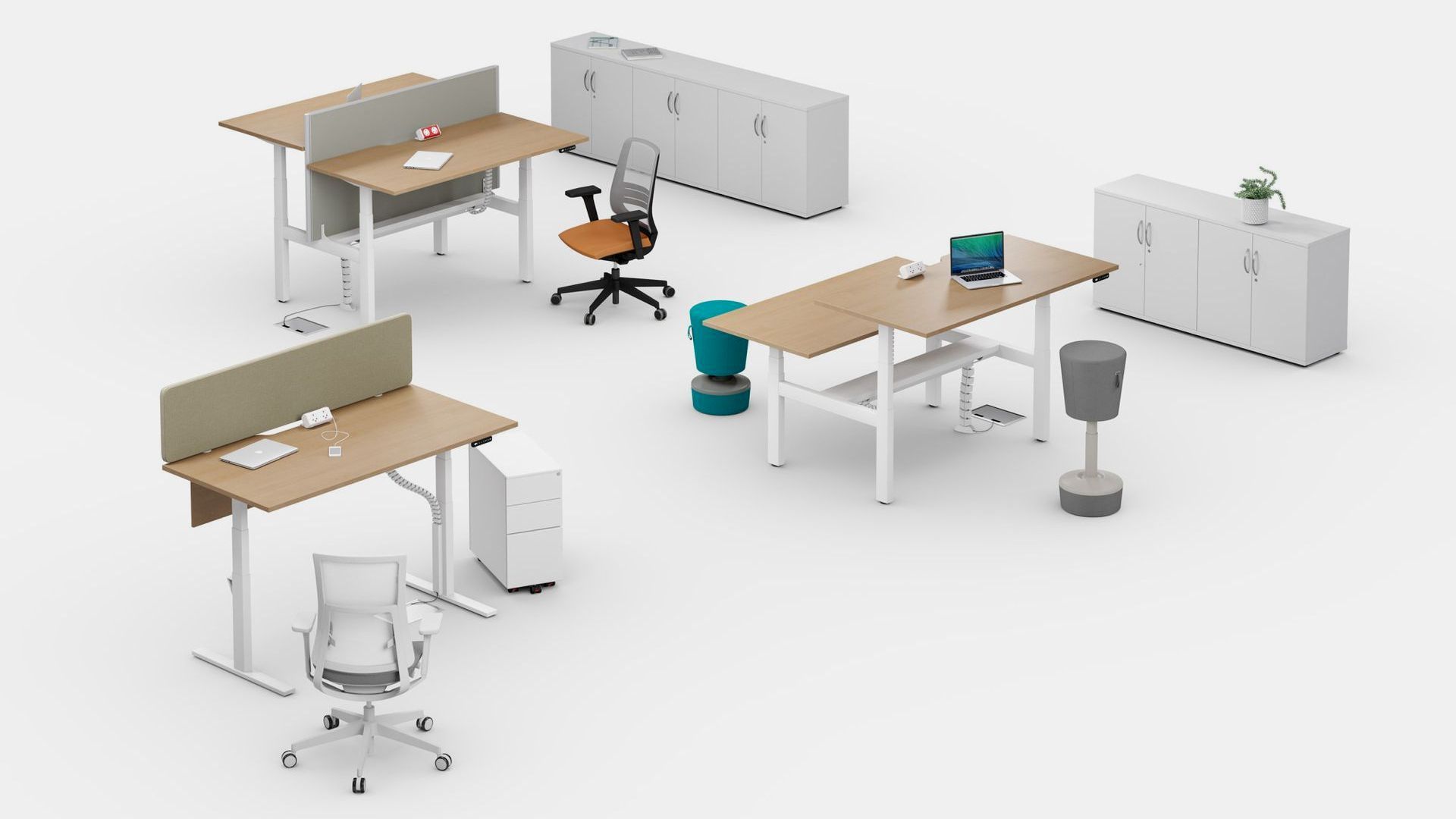
Bamboo
Bamboo is a beautiful and sustainable material that we feature often in our product lines. It requires less energy to grow, supplies biofuel, and produces more oxygen than other plants (source). It also traps high quantities of carbon dioxide, contributing to a cleaner environment and office space.
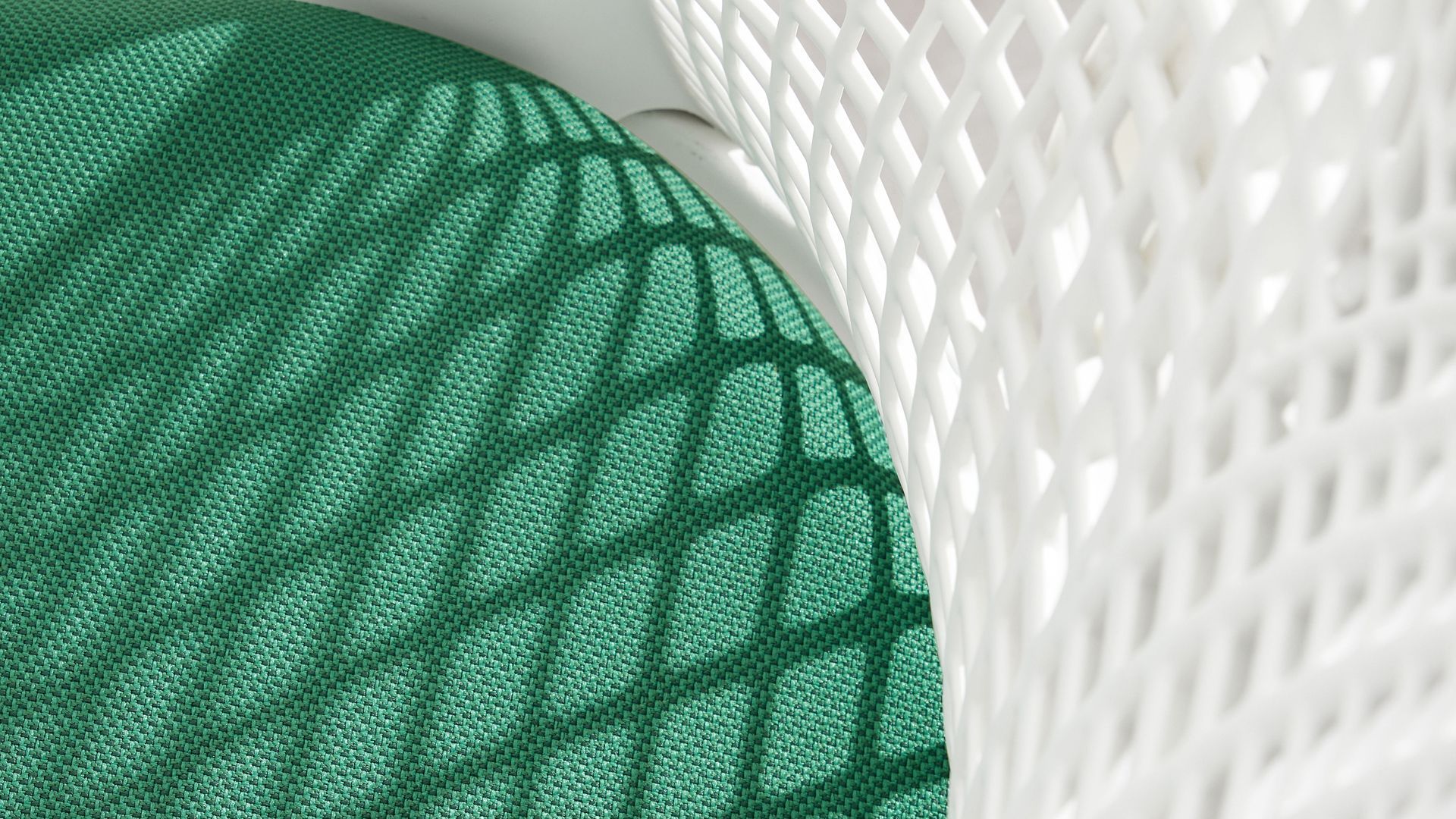
Recycled Polyester
Recycled polyester is excellent for upholstering soft seating and office chairs, using 79 per cent less carbon emissions than new polyester (source). Using recycled polyester for furniture materials also prevents the waste from entering waterways and landfills.
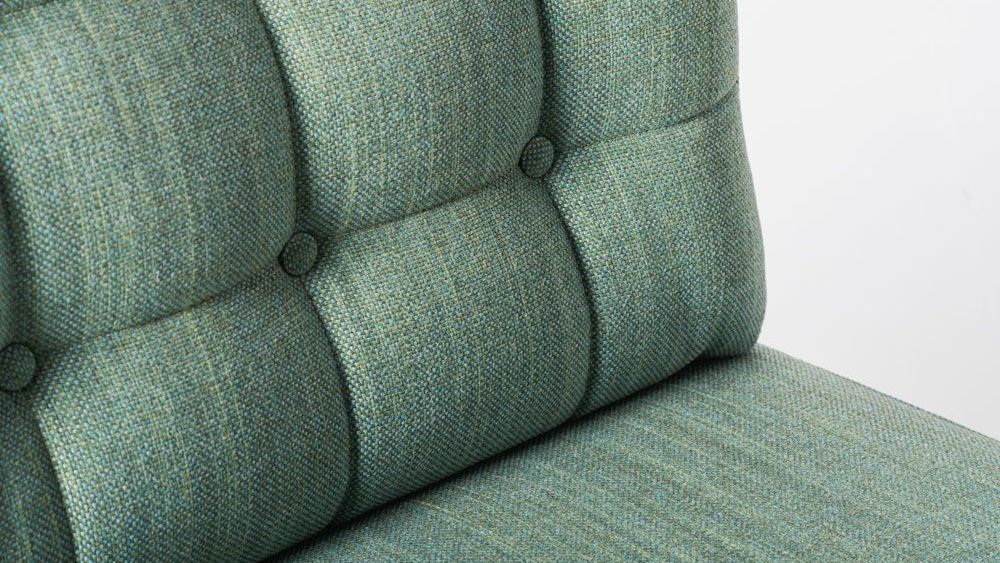
Recycled Textile Waste
Furniture made from recycled textile waste uses materials that would have otherwise been sent to landfill. This includes both industrial textile waste and post-consumer waste. Through a variety of recycling processes, such as mechanical recycling, the material can be reused for stunning furniture.
VerdEco (above) was released last autumn and is a first for Agua. A sustainable collection, VerdEco is made from 100% upcycled textile waste, using a mechanical recycling and re-spinning process that is completely water-free. In fact, upholster a three-seat sofa in VerEco and you’ll save an average of 250 litres of water. With melange yarns and a robust hopsack weave, there’s not an environment that VerdEco won’t flatter, and using this collection will boost your project’s environmental credentials, too.
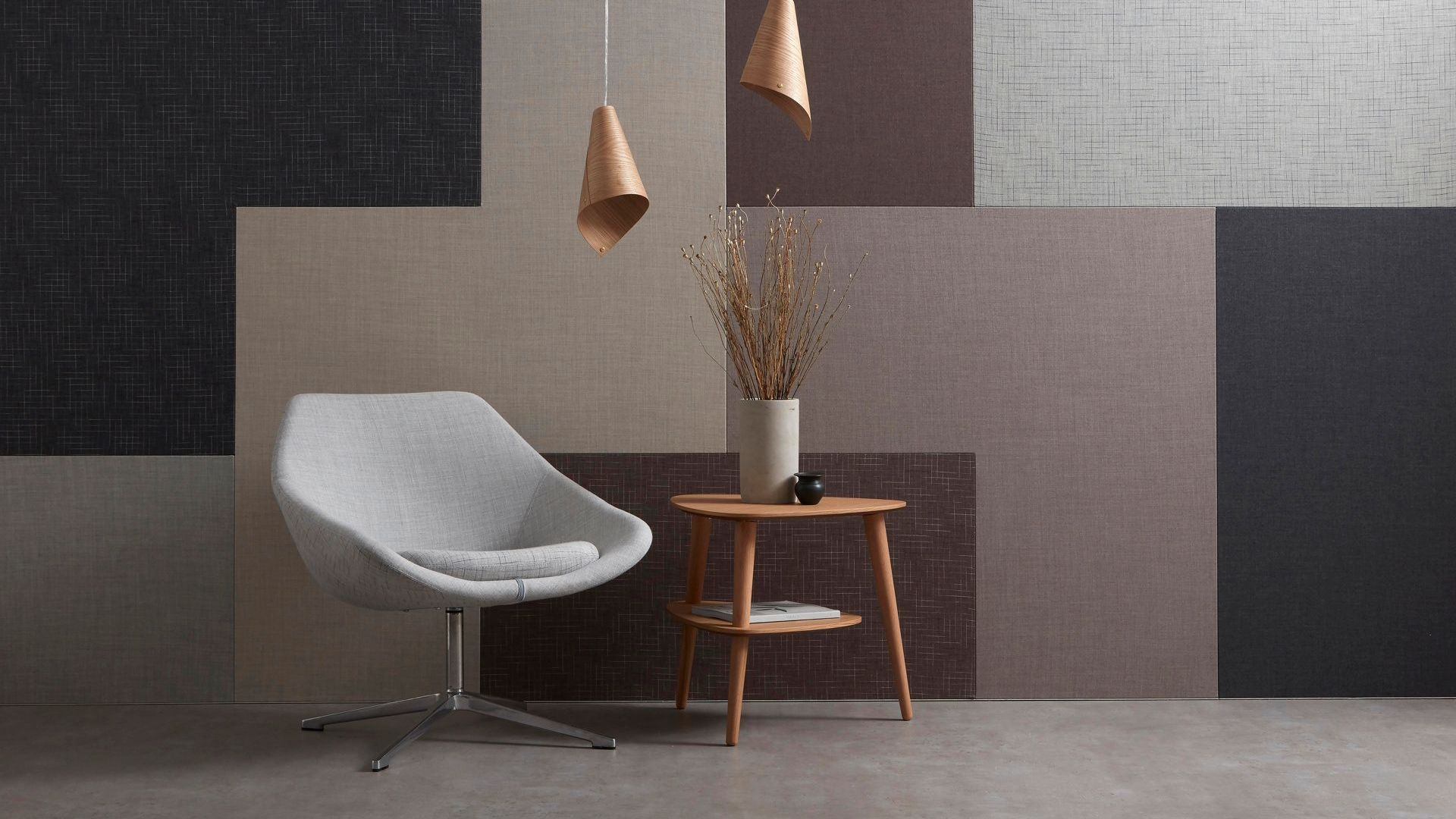
Wool
Wool is a circular material that is renewable, 100% natural, and recyclable. It's also easy to maintain, clean, and repair, making it a durable choice. When choosing furniture that utilises greener manufacturing processes and lower greenhouse gases, consider wool.
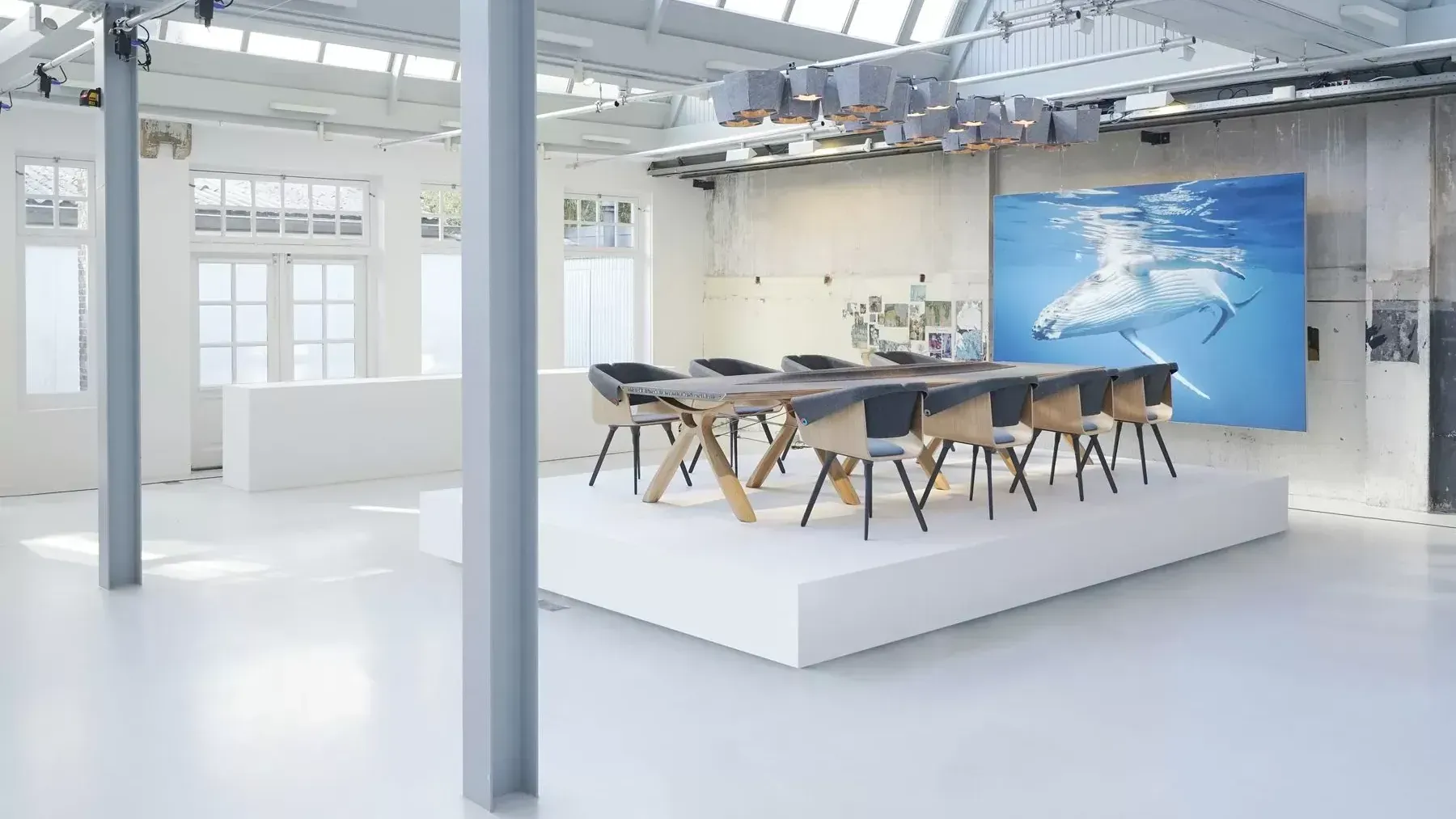
Recycled PET
Recycled PET, typically from plastic bottles and food packaging, is a light and durable material. One of the most significant advantages of recycled PET products is their ability to be recycled almost infinitely, reducing greenhouse gas emissions for decades. Utilising recycled PET in furniture production provides an effective solution to the problem of plastic waste generation and excess waste.

Recycled Blue Wrap Hospital Waste
Saxen is continually exploring novel approaches to support the development of a circular economy. One of our select sustainable options is the Blue Finn from Vepa, which uses hospital waste to create a stackable chair. The final product is made from at least 85 per cent recycled blue wrap and is itself 100 per cent recyclable. Complete with a steel wire frame and available in four different sizes, this is a fresh furniture design.

Recycled Glass
Recycled glass is another material with an infinite life cycle. Endlessly recyclable, recycled glass cuts back on waste and saves natural resources. Saxen can utilise recycled glass for tabletops from Diamik, which sources and processes post-consumer glass to manufacture stunning surfaces of various designs.
Why choose sustainable office furniture?
Saxen provides sustainable commercial space planning services. You might wonder why we do it? Well, we have our reasons.
Firstly, we are on track to be carbon neutral by 2050. We owe it to the planet that serves us. Partnering with sustainable manufacturers allows us to focus on our net zero goals and help clients with theirs, too.
Secondly, sustainable furniture is much more energy efficient. Conserving energy is extremely important to contributing to a greener planet. Choosing sustainable furniture materials also aligns with health and well-being practices. Materials that emit less harmful substances, such as volatile organic compounds, ensure a healthier workspace for employees.
Another significant reason we choose eco-friendly furniture materials is because durability is important to us. Trends are fleeting, but timeless and long-lasting pieces are what's most important. High-quality materials and craftsmanship create furniture that lasts longer and reduces the need for frequent replacements. Not only does this save resources, but it contributes to long-term cost savings for businesses.
Making your workspace more eco-friendly
Think of the future and how you want it to look. With a forward focus, making sustainable decisions is of the essence. Here are a few simple ways you can make your office more eco-friendly and reduce your carbon footprint:
> Refurbish
When a piece of furniture is nearing the end of its life, give us a call. We have a new refurbishment facility where we can breathe new life into old products.
> Lighting
Switch to LED or energy-efficient lighting to reduce energy consumption and extend the lifespan of bulbs.
> Recycle
Implement waste reduction strategies, such as promoting recycling, reducing paper usage, and encouraging employees to minimise waste. Saxen can recycle your furniture for you, ensuring they don't end up in landfill.
> Green cleaning
Use eco-friendly and non-toxic cleaning products to reduce the environmental impact of office cleaning.
> Water conservation
Implement water-saving measures, such as low-flow taps, toilets, and efficient irrigation systems.
> Carbon offsetting programmes
Invest in carbon offsetting programs to neutralise the carbon footprint associated with business operations.
Frequently asked questions
Contact Saxen to elevate your workspace with sustainable design and innovative solutions. Our comprehensive services, from innovative office furniture and move management, to expert space planning and refurbishment, will transform your office into a sustainable and stylish haven. Reach out for a consultation and take the first step toward a workspace that reflects your values.
share this page
all posts.

